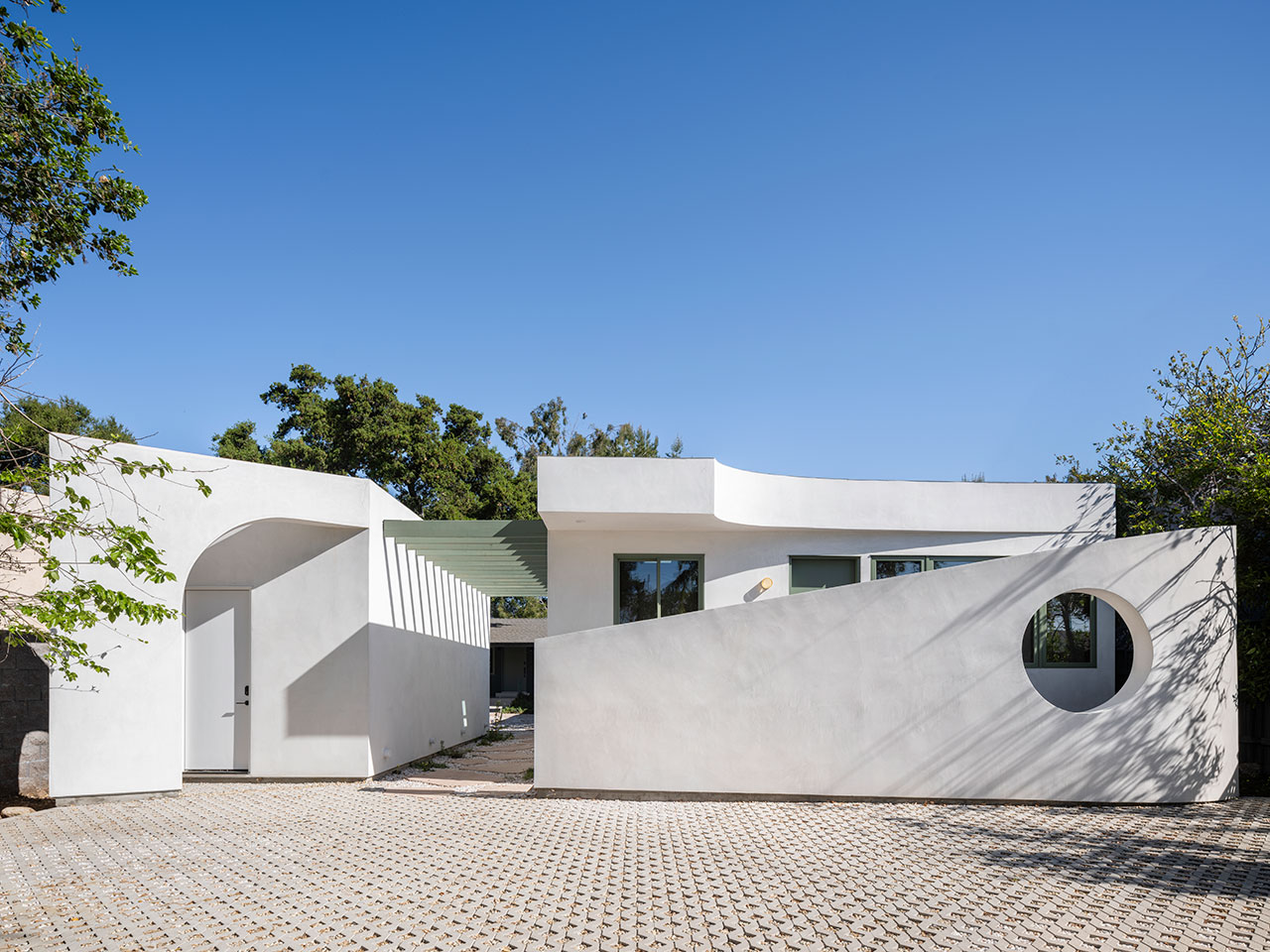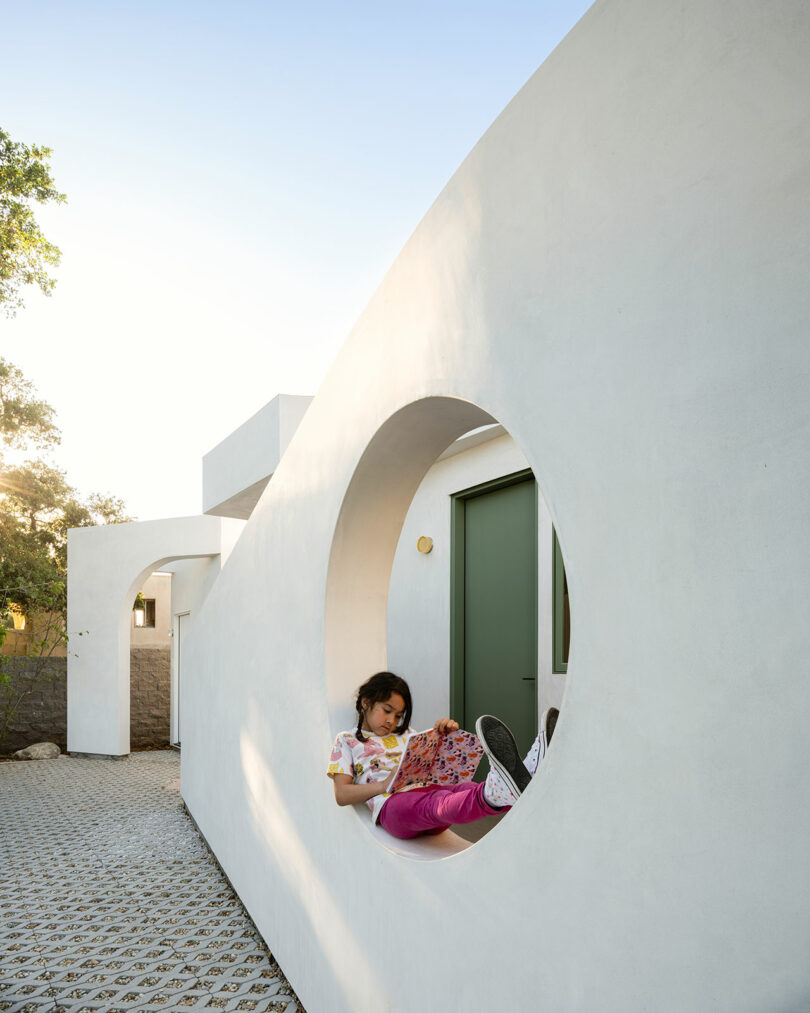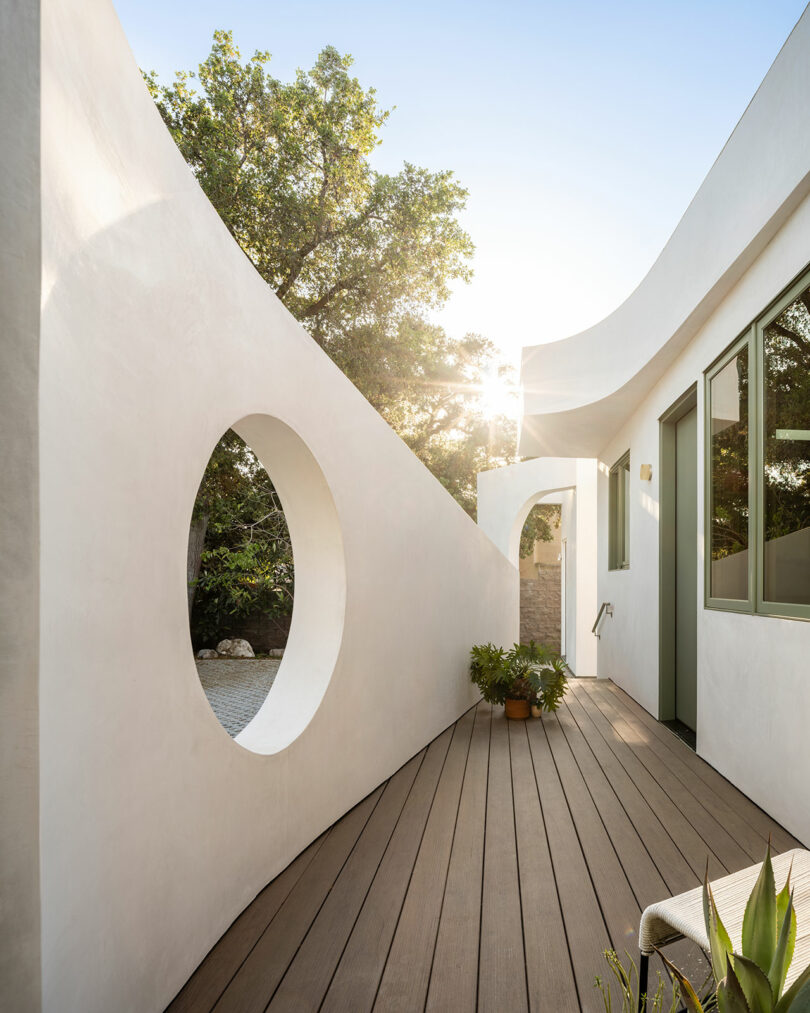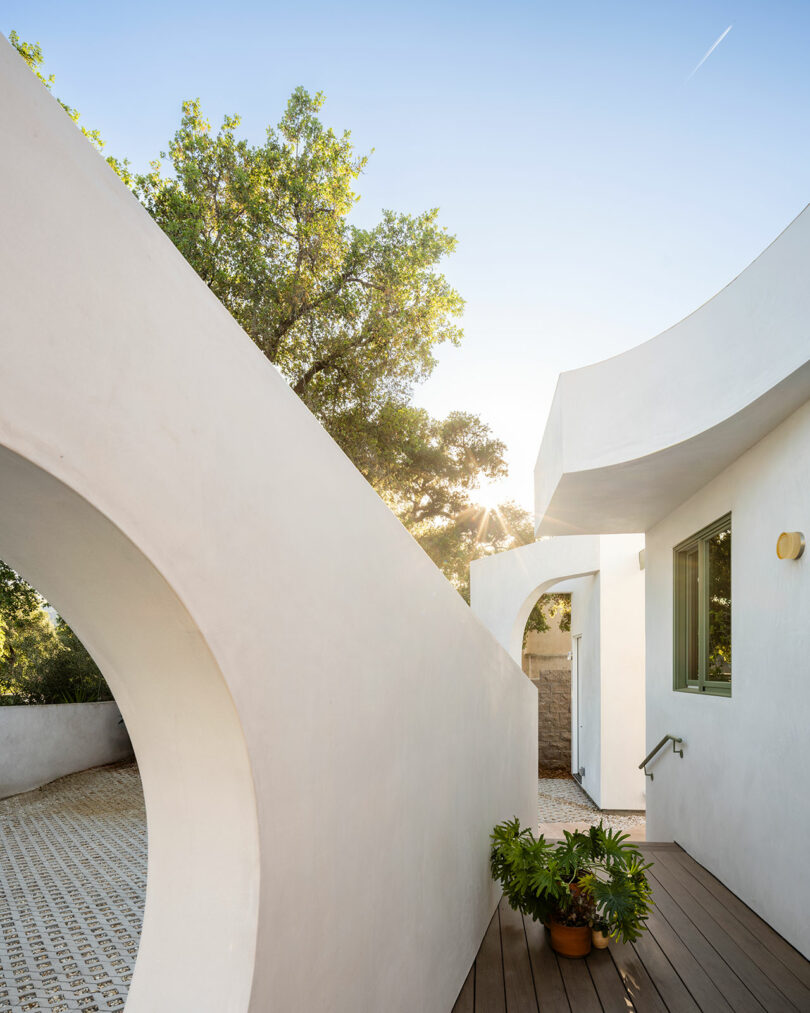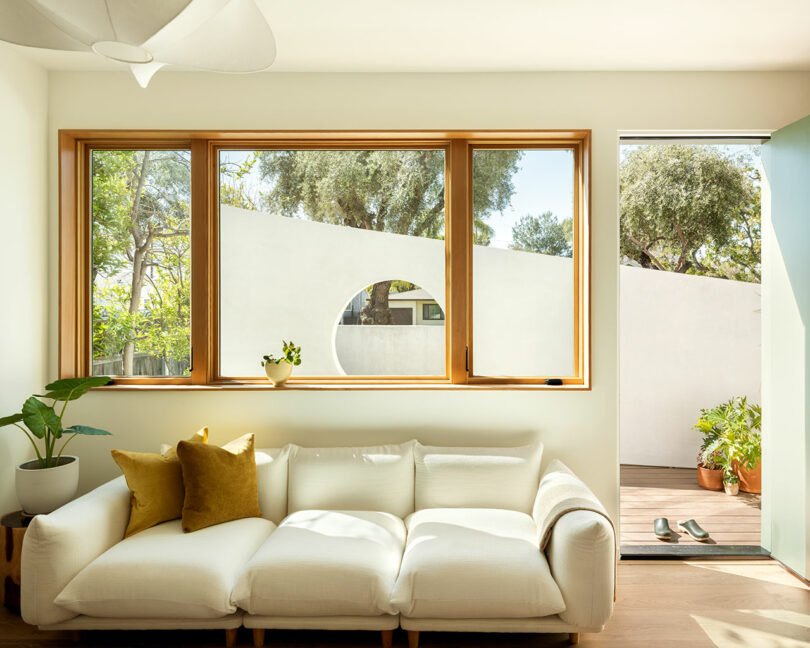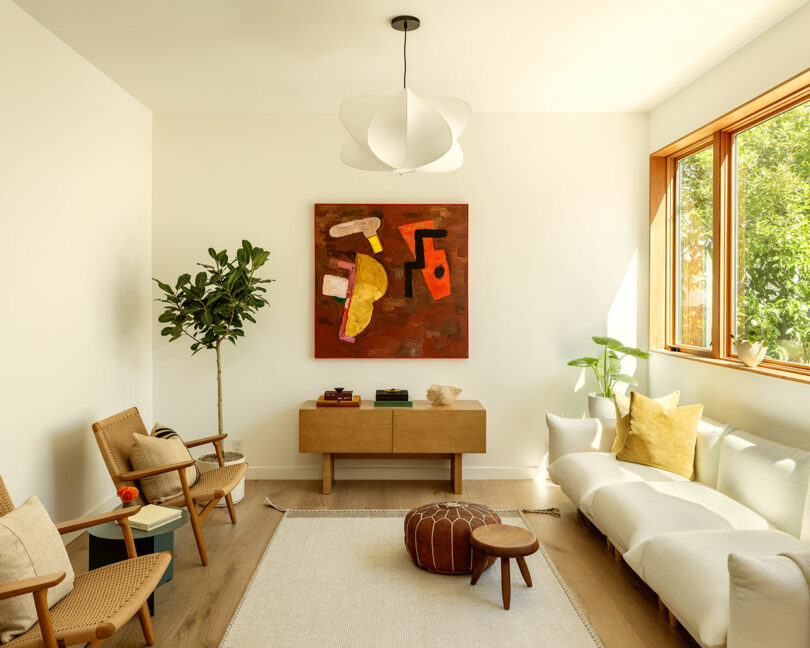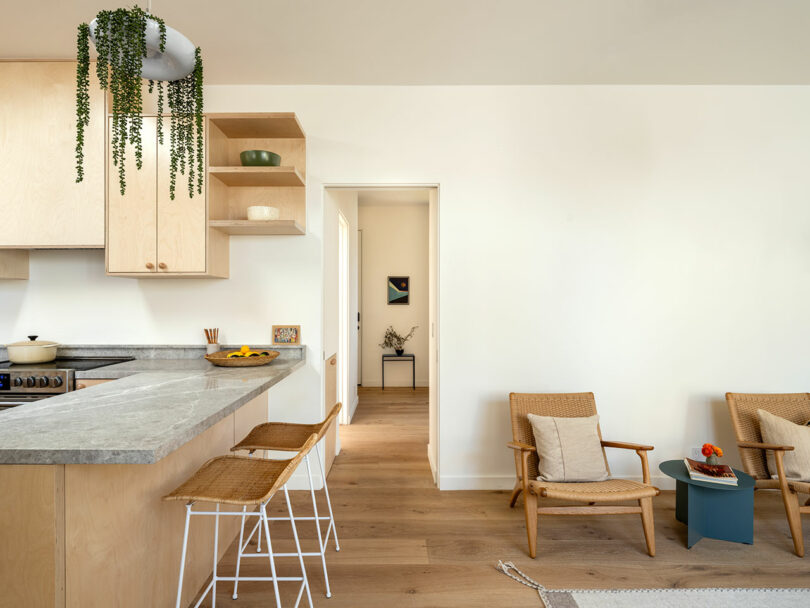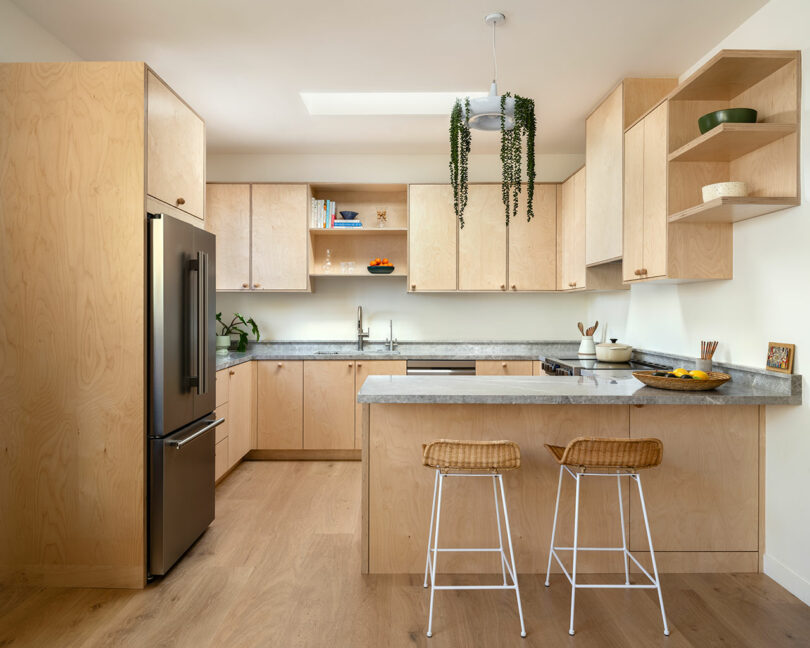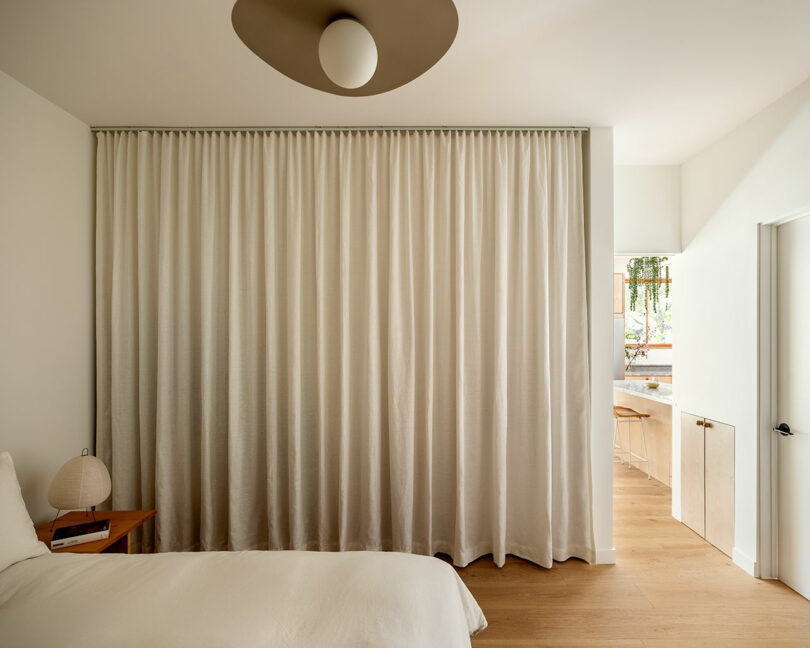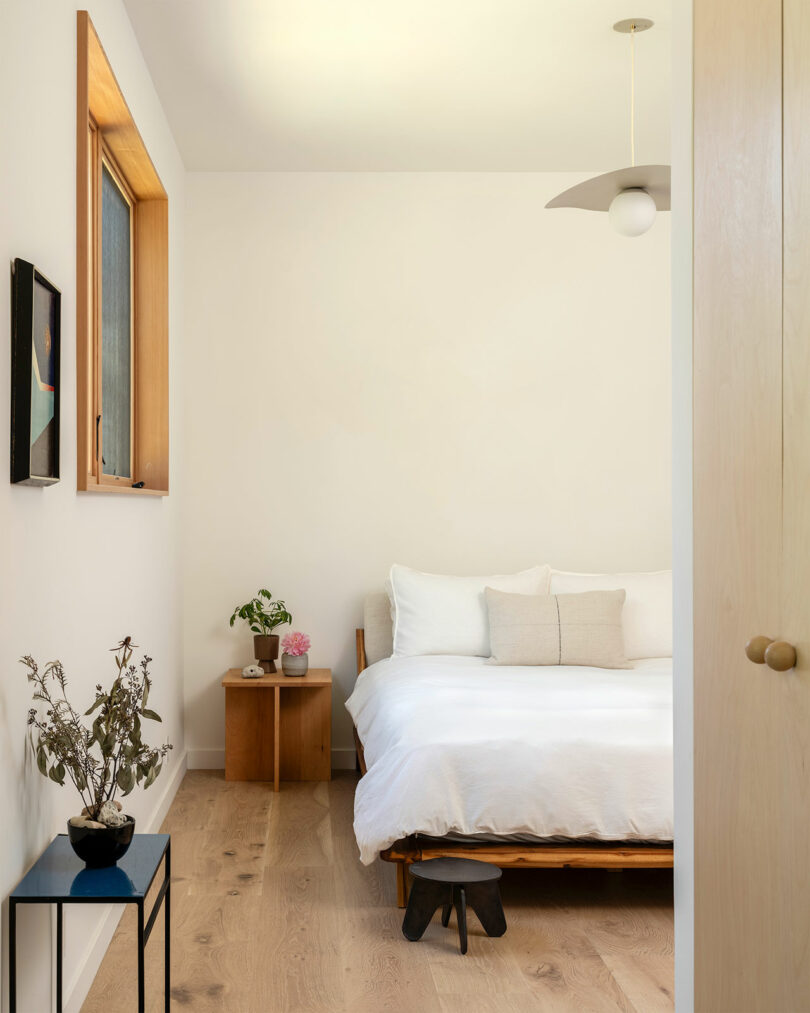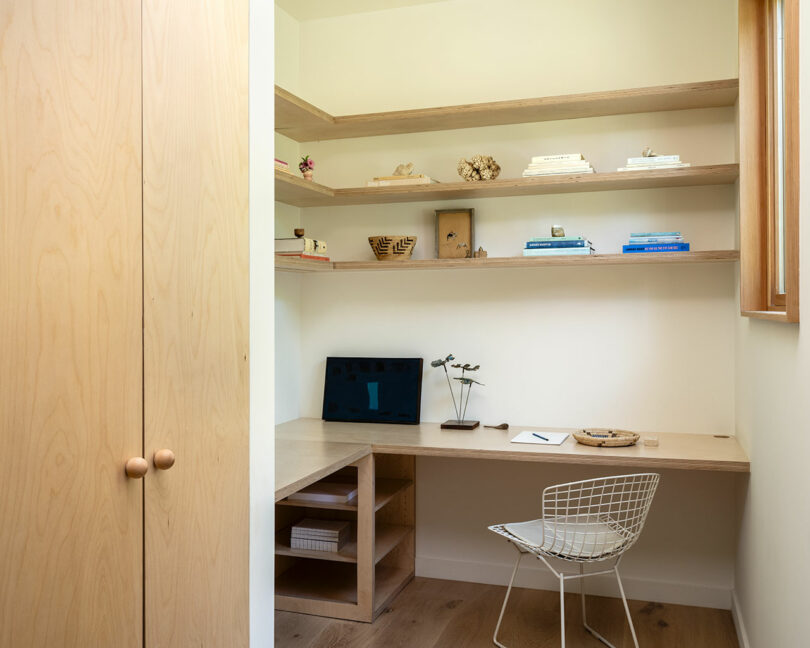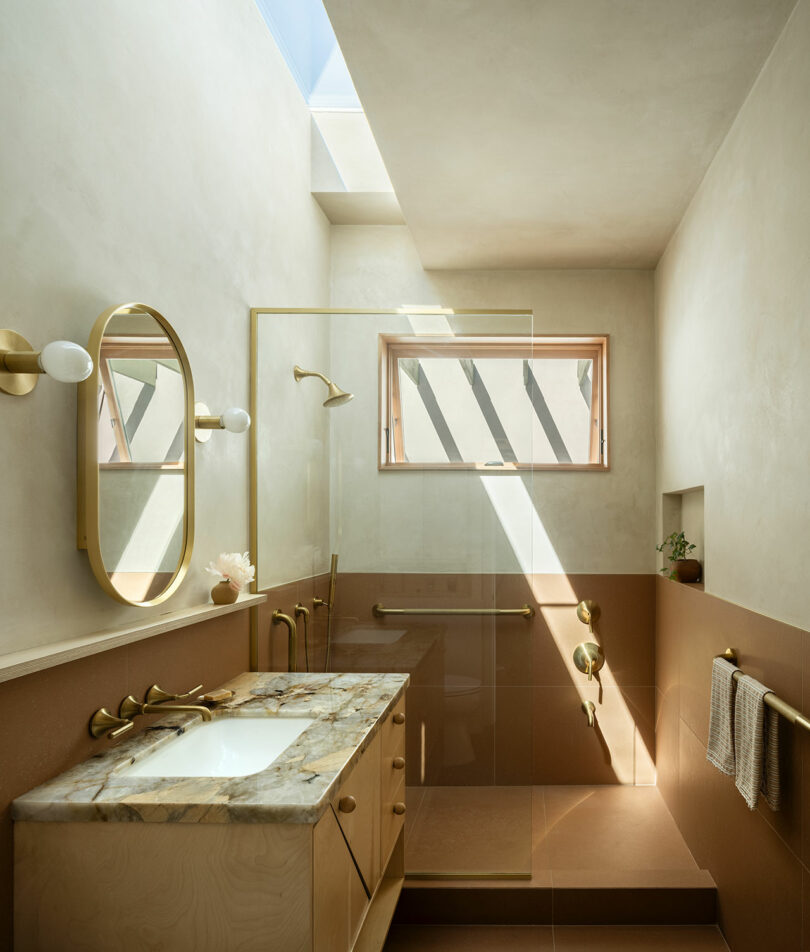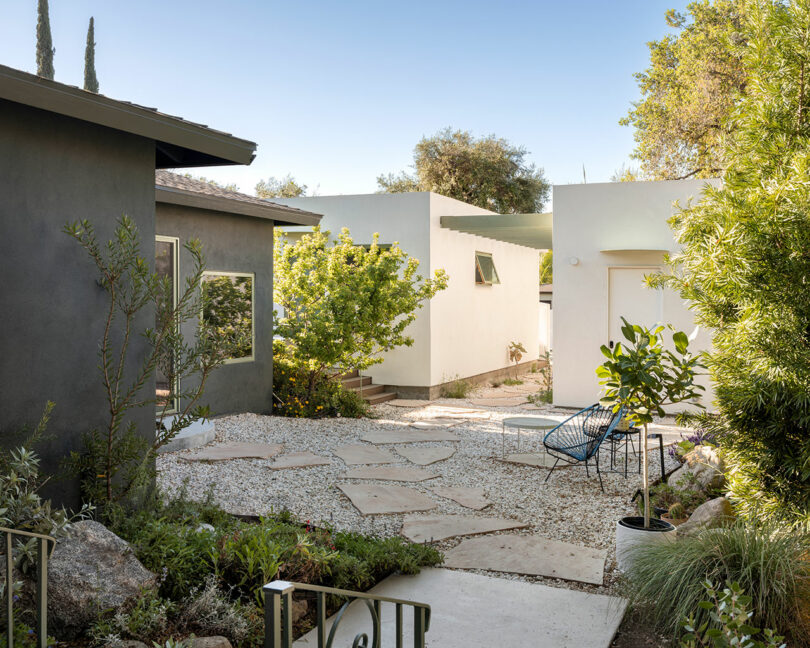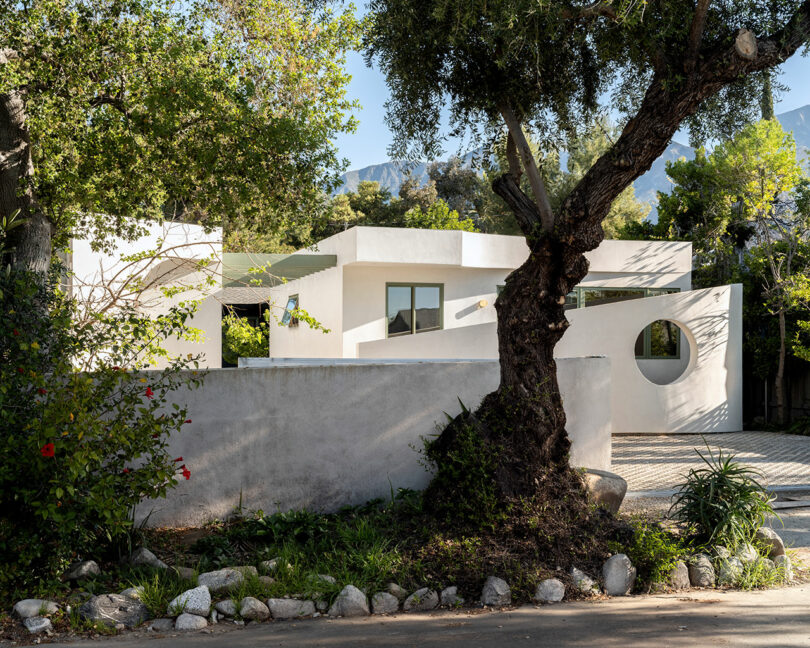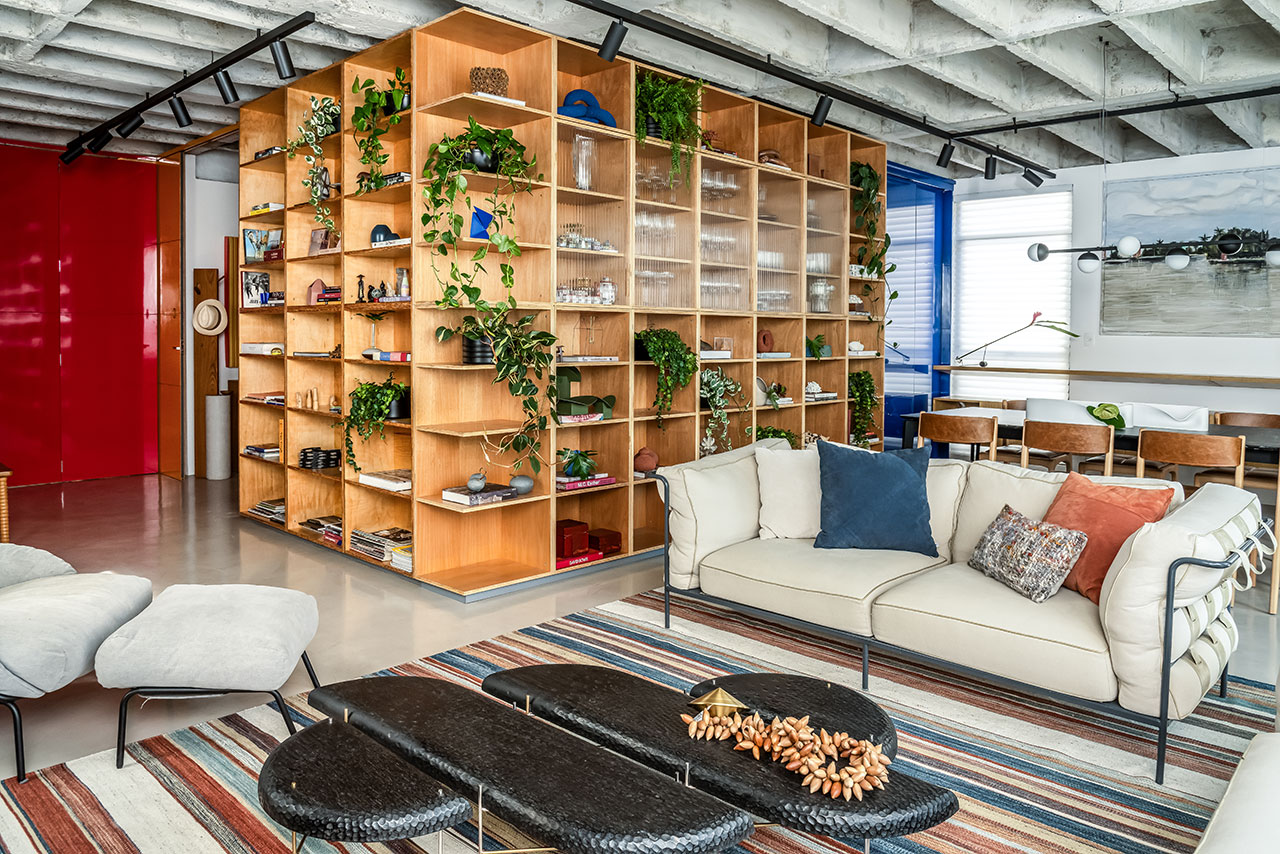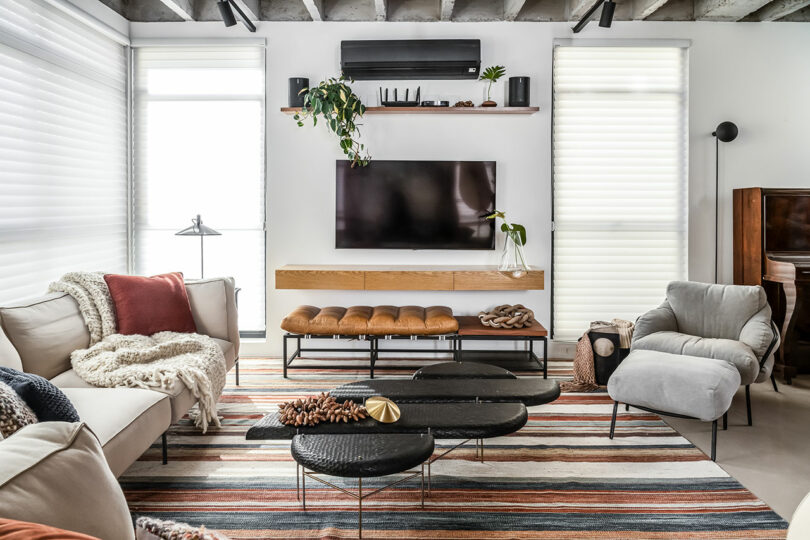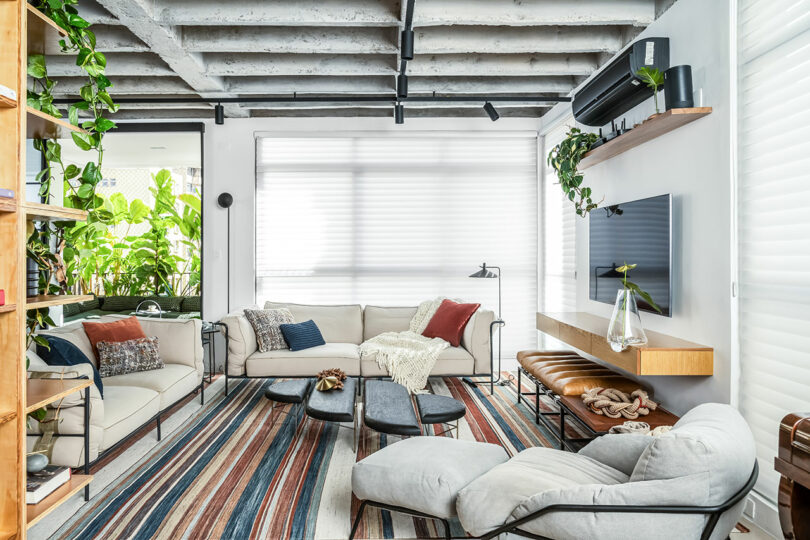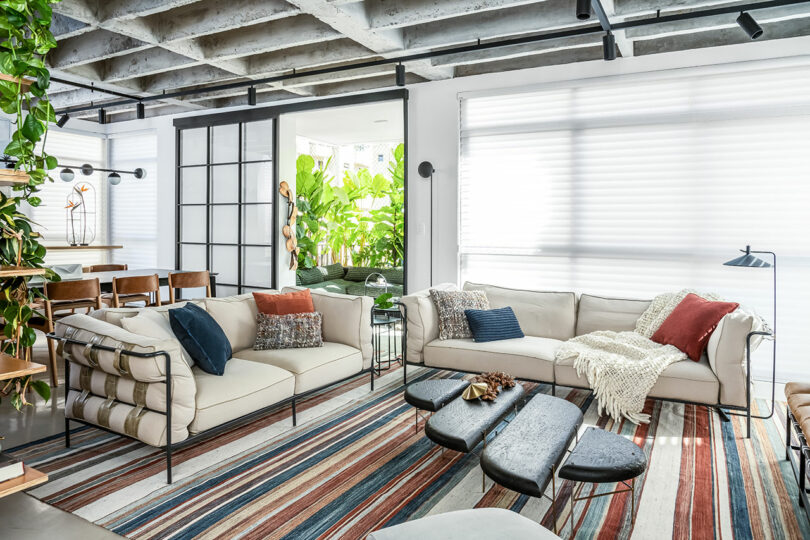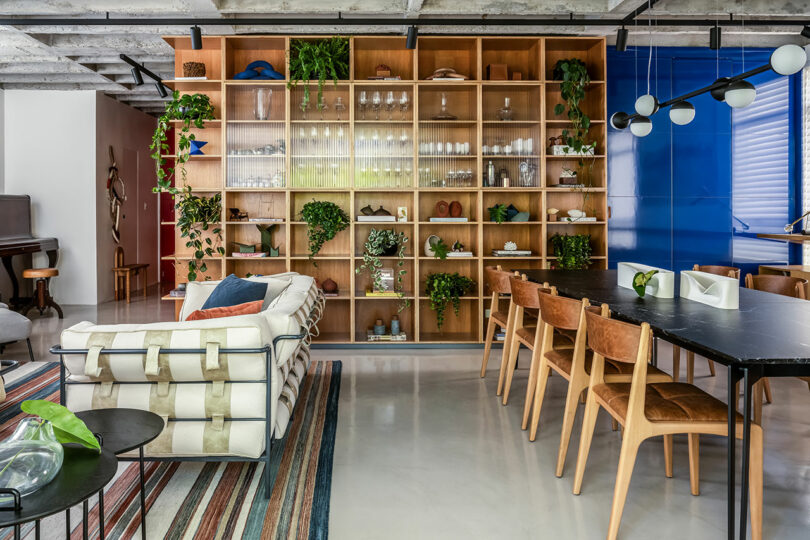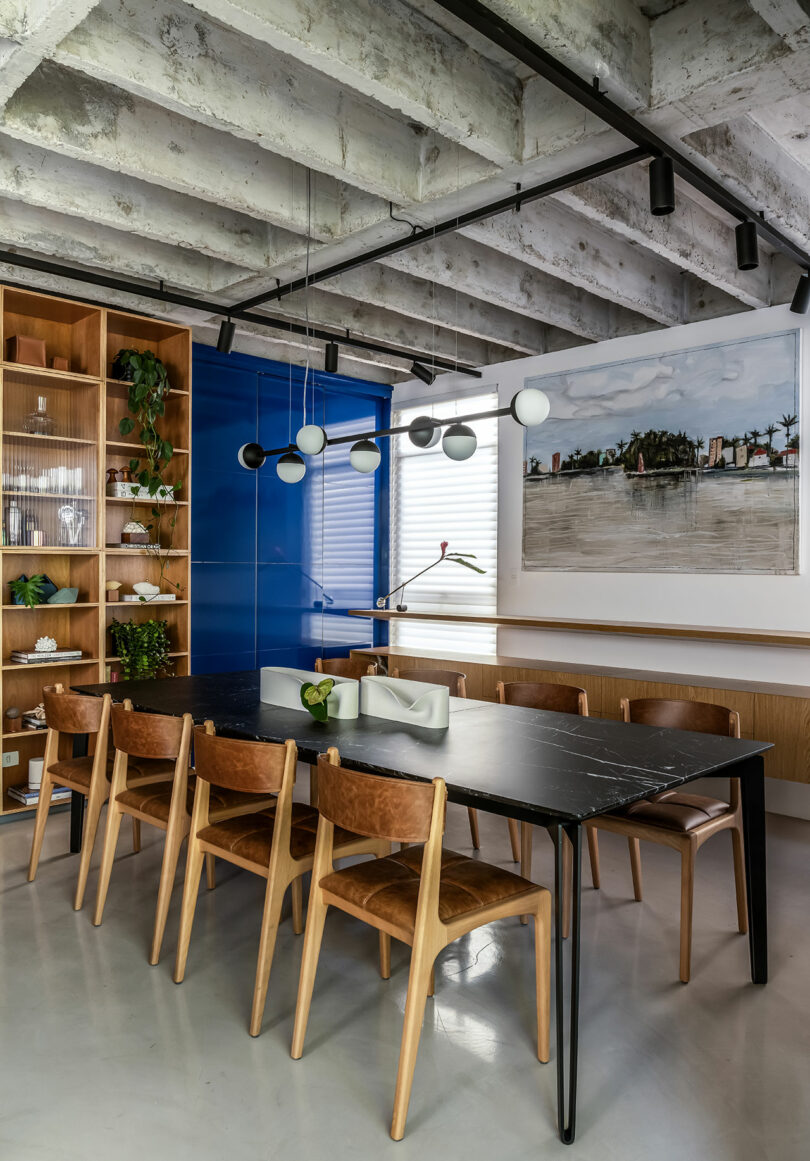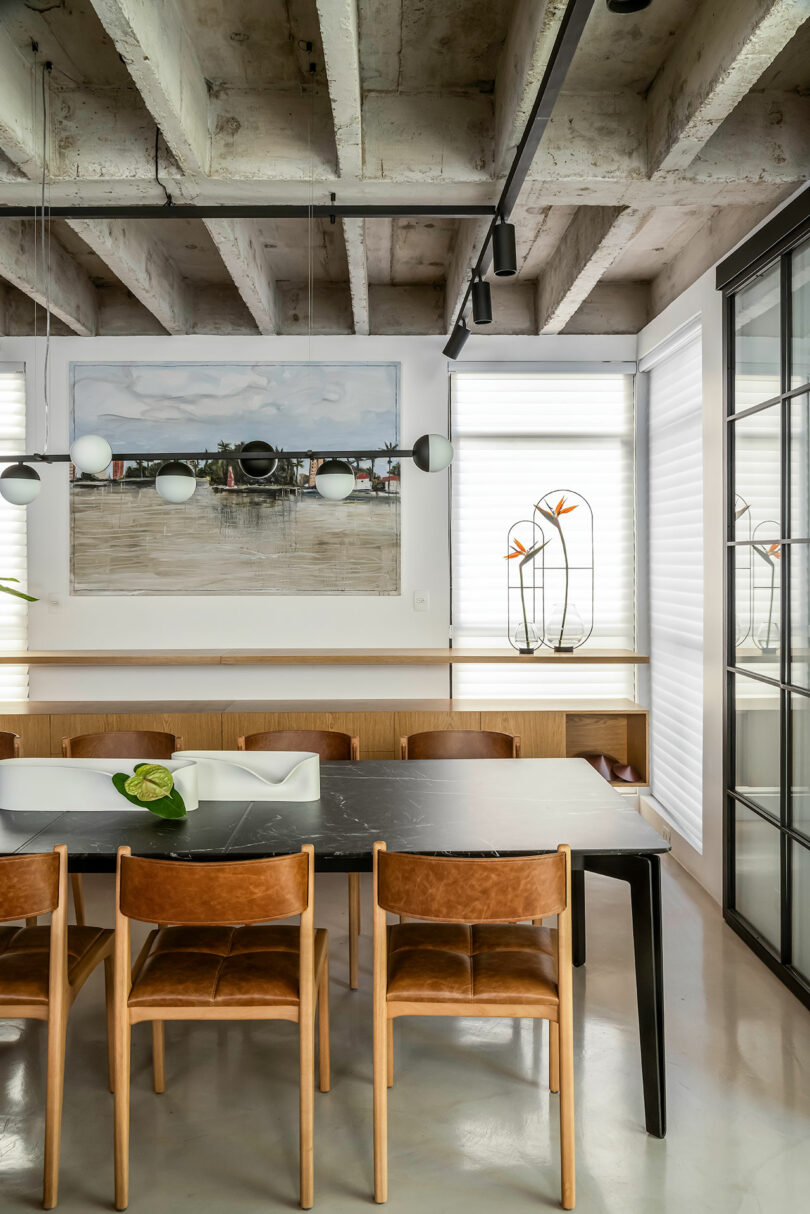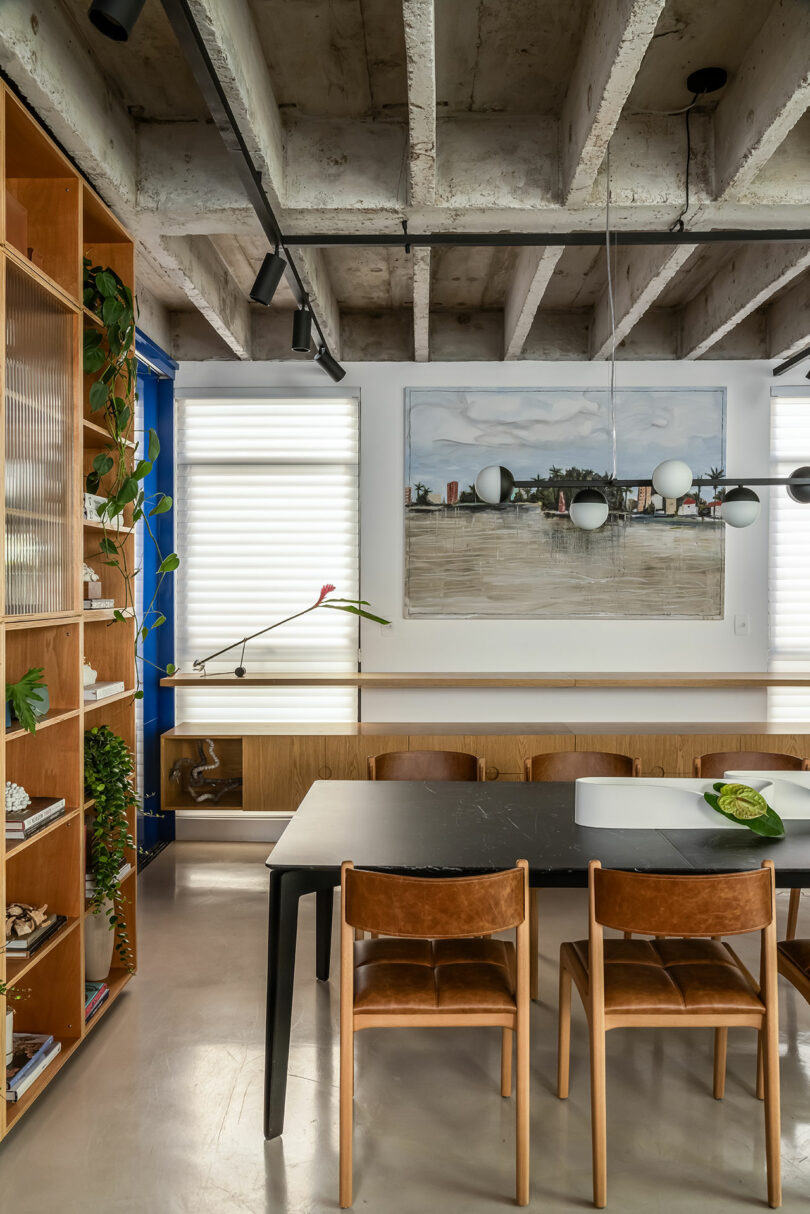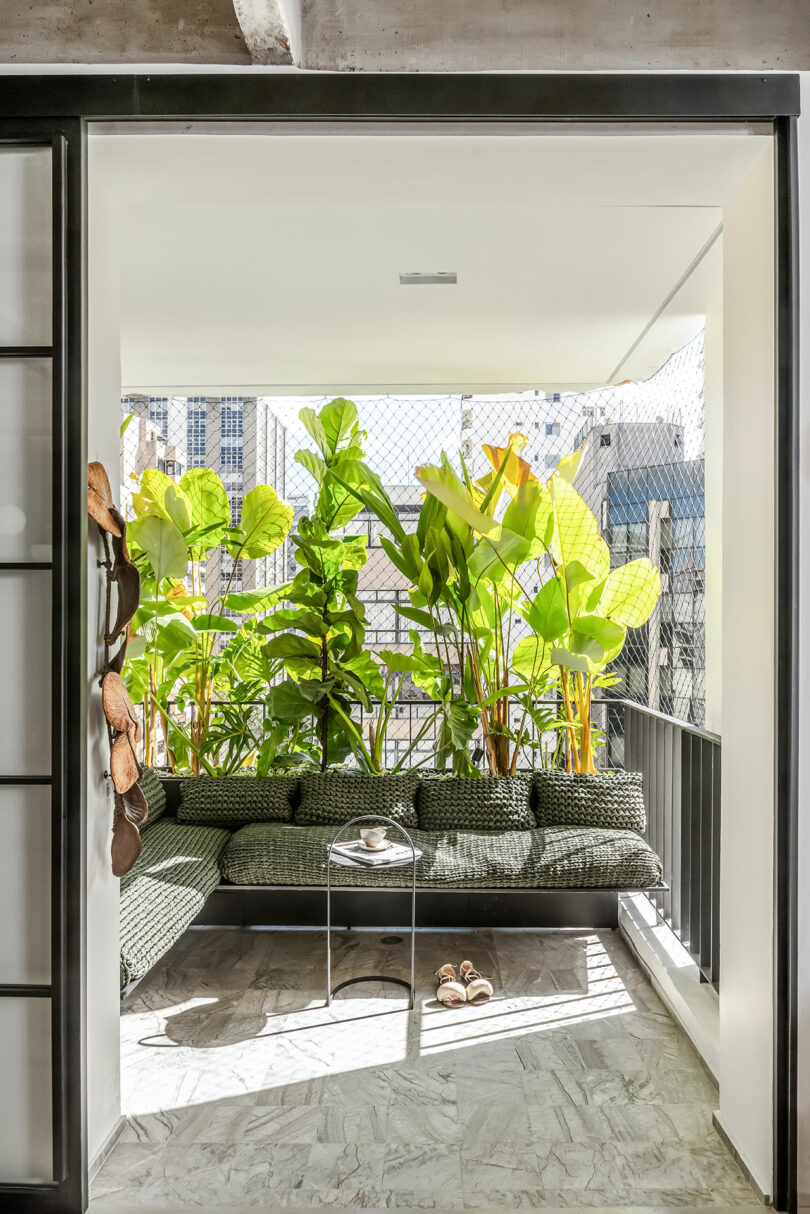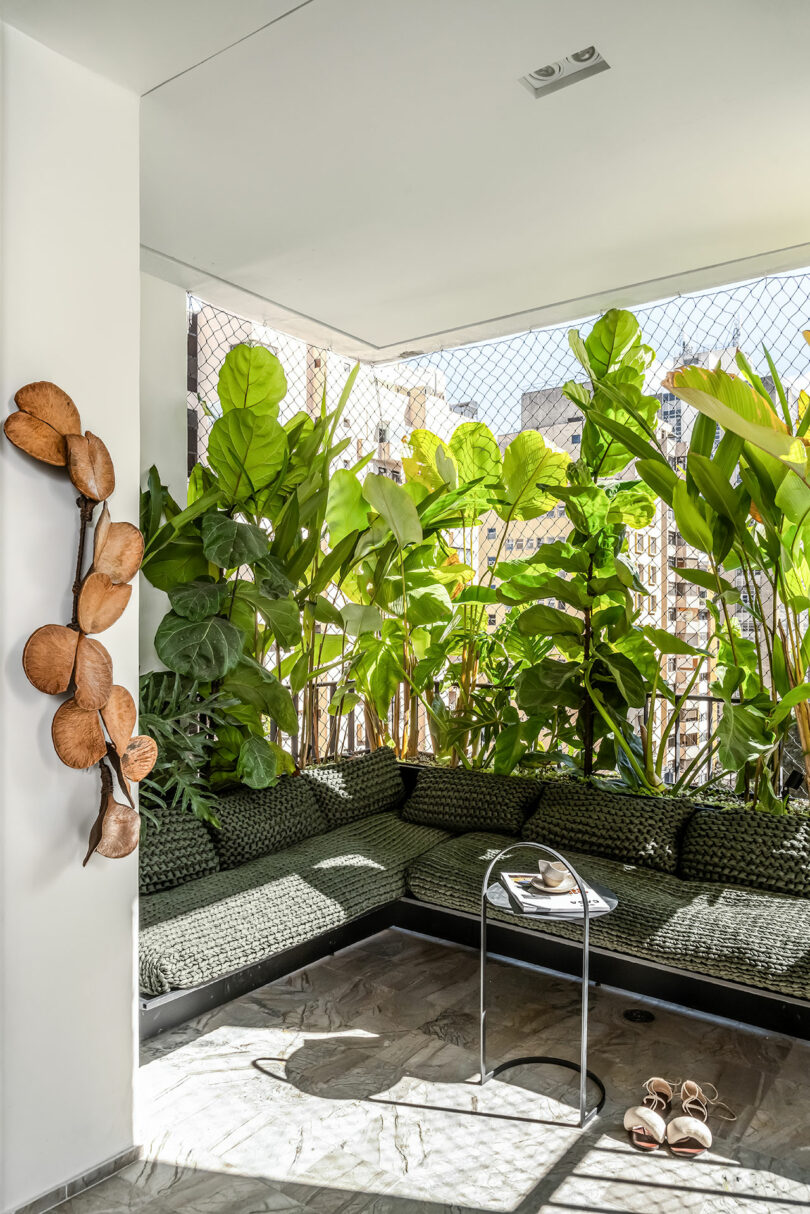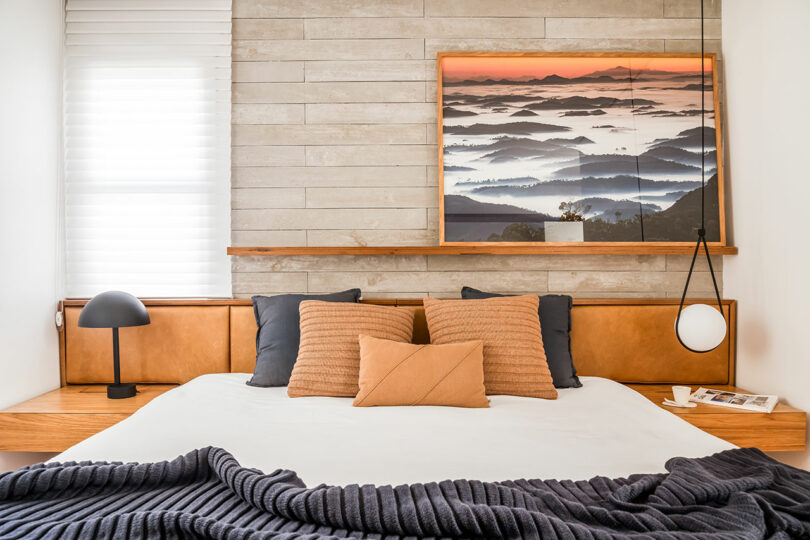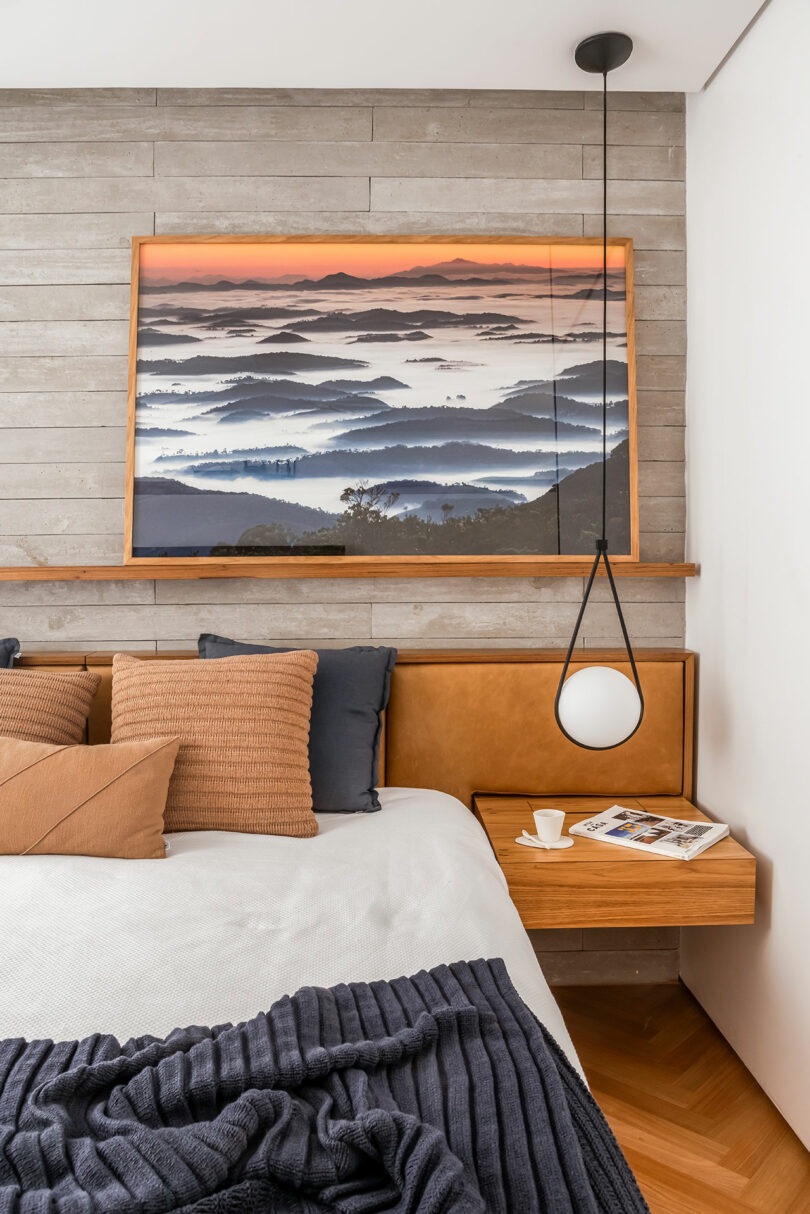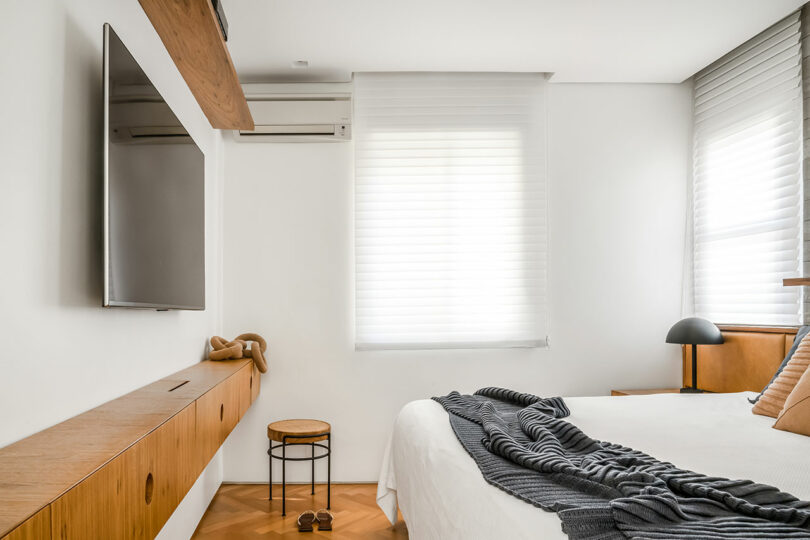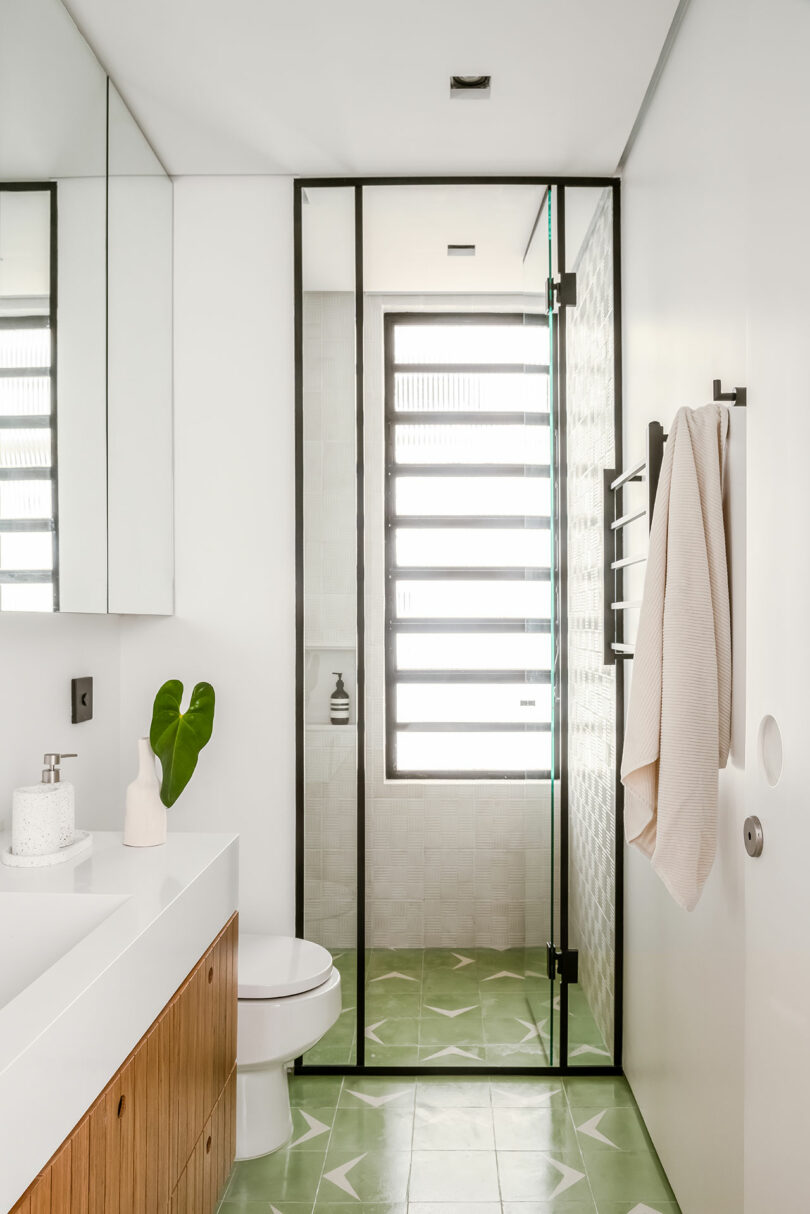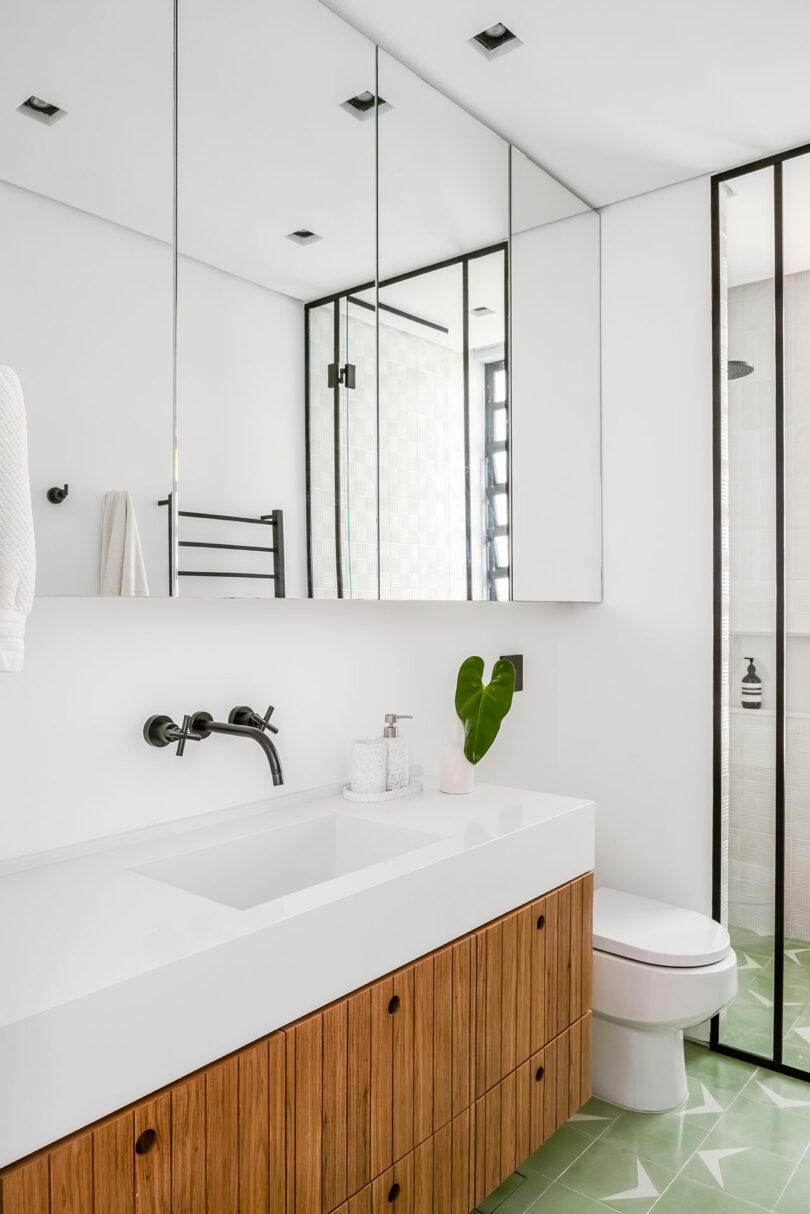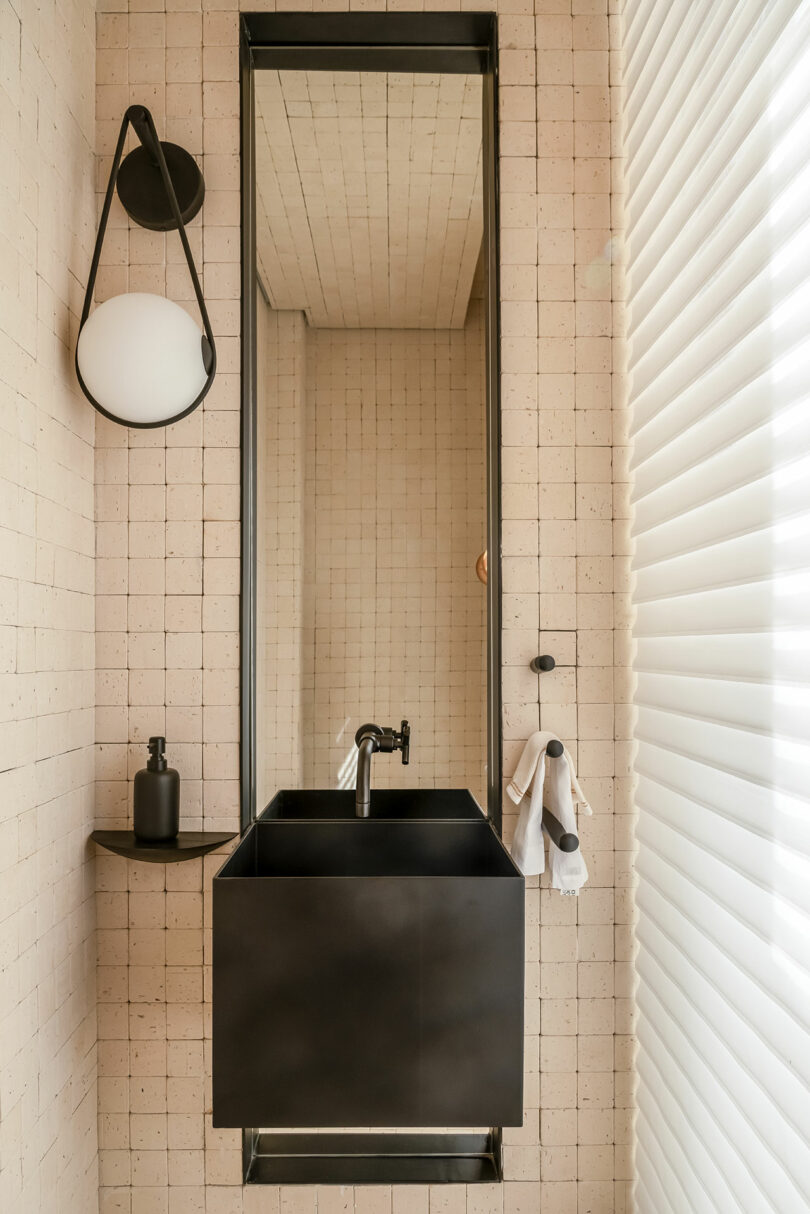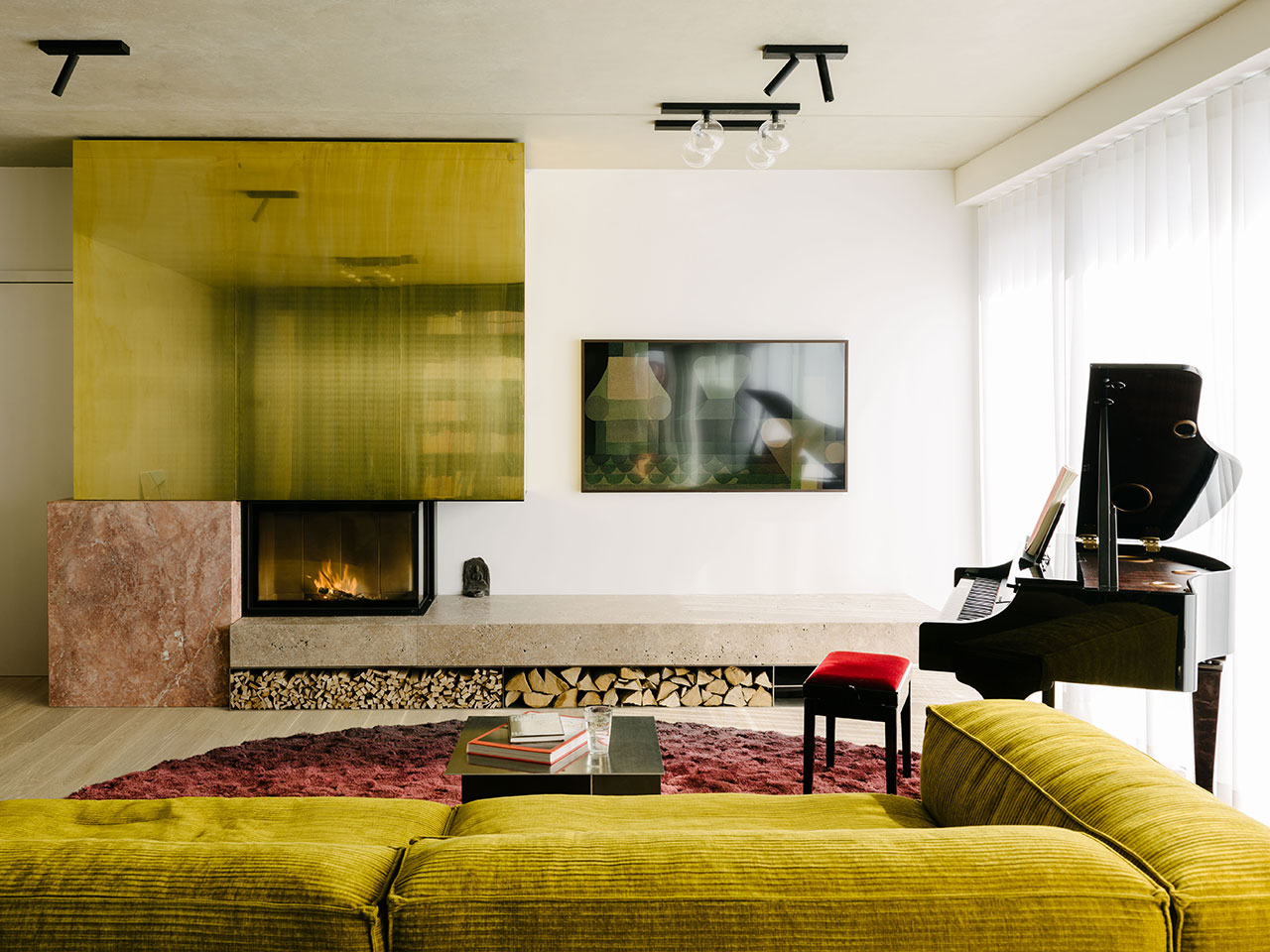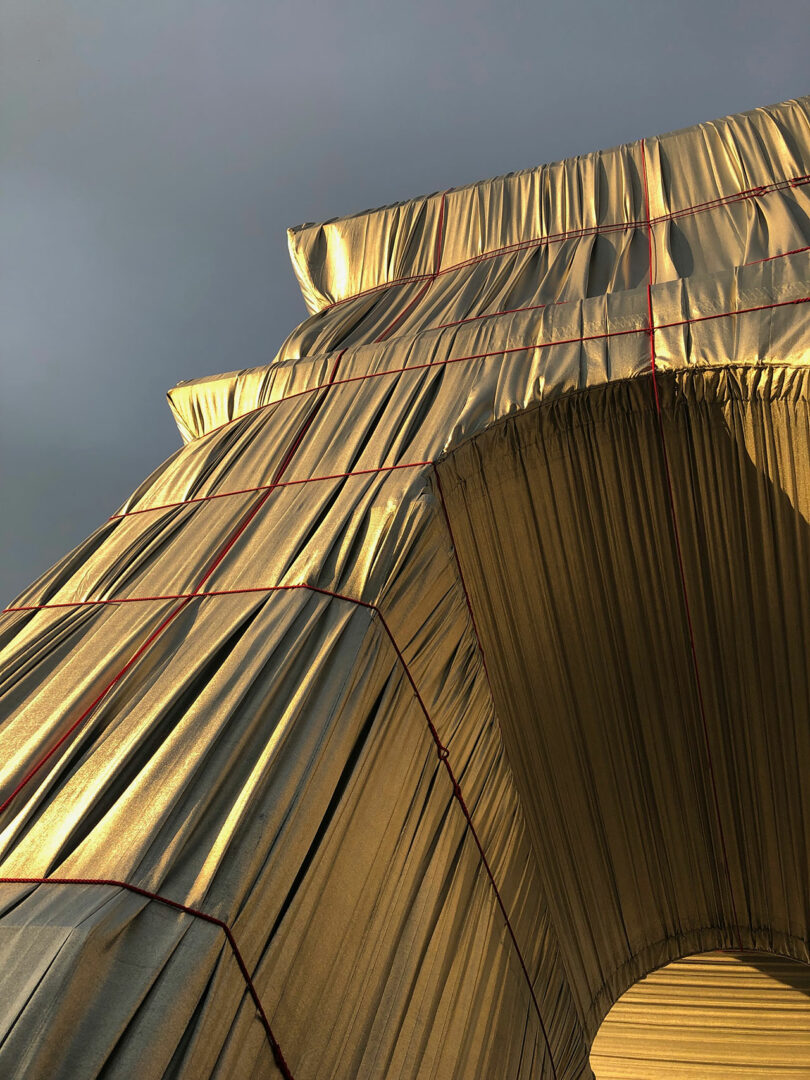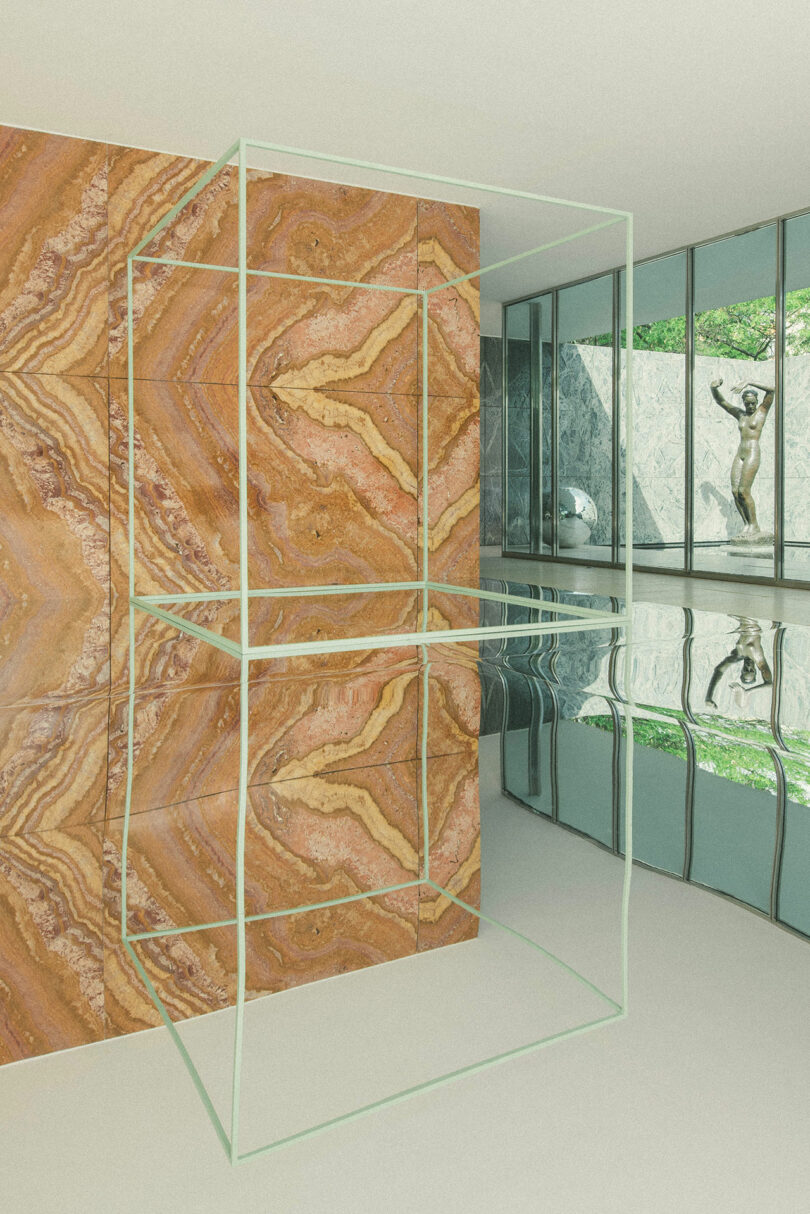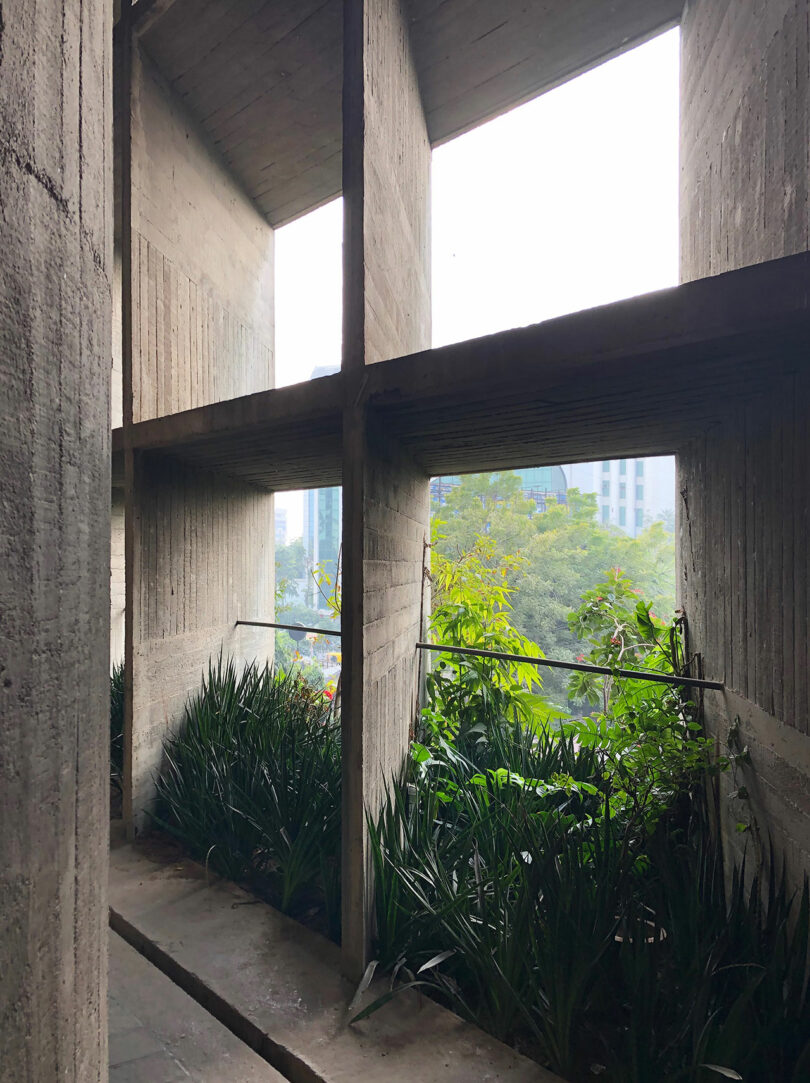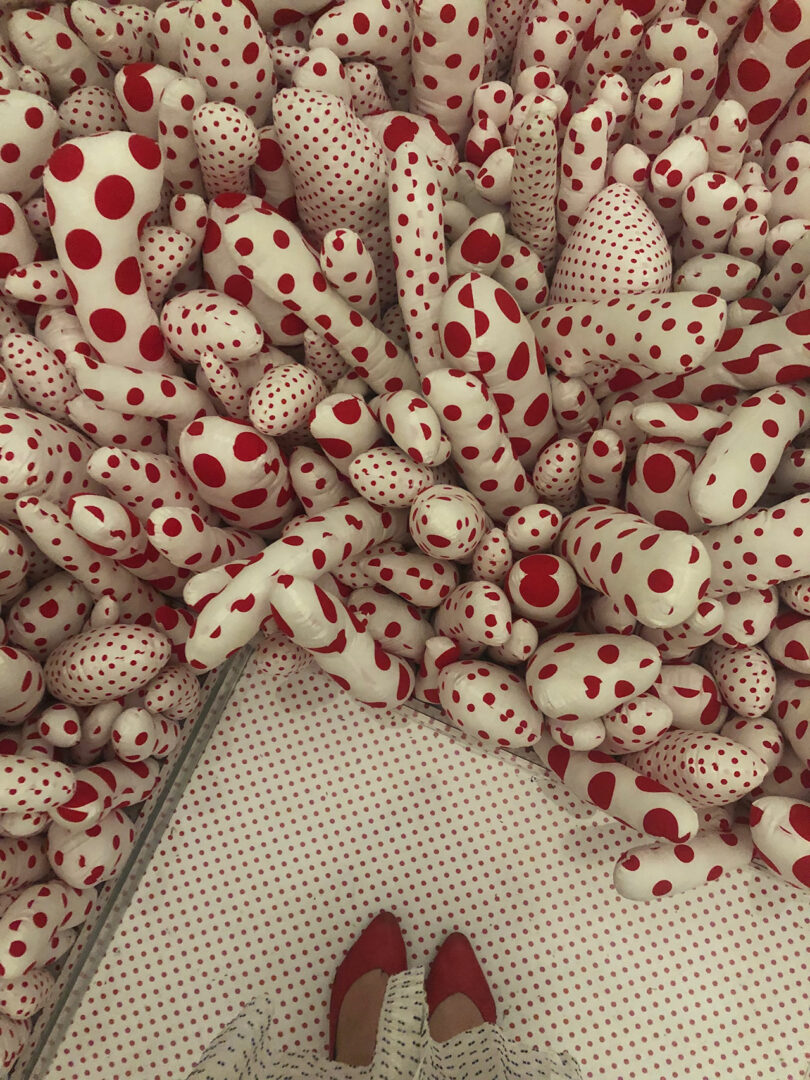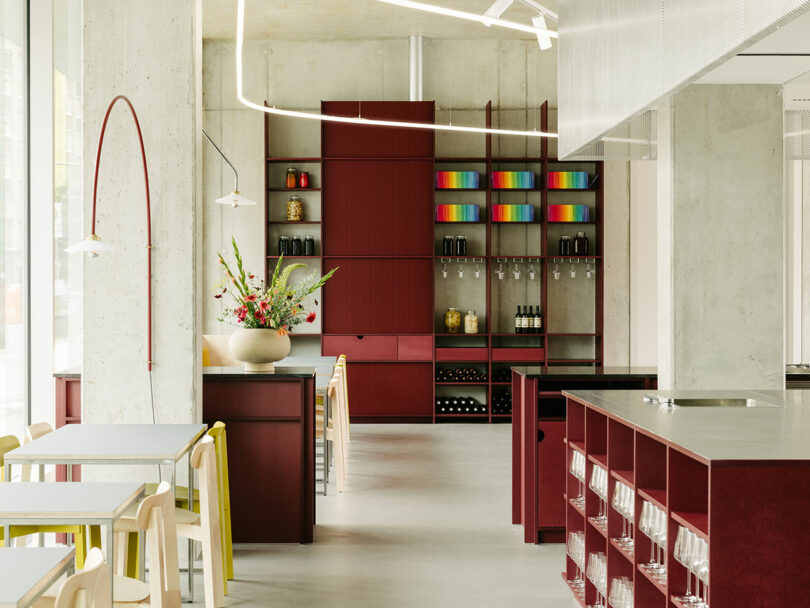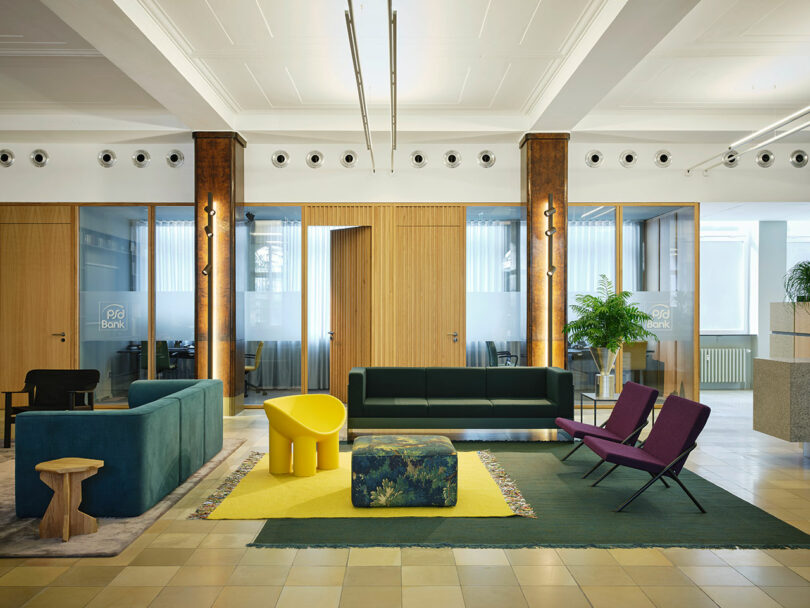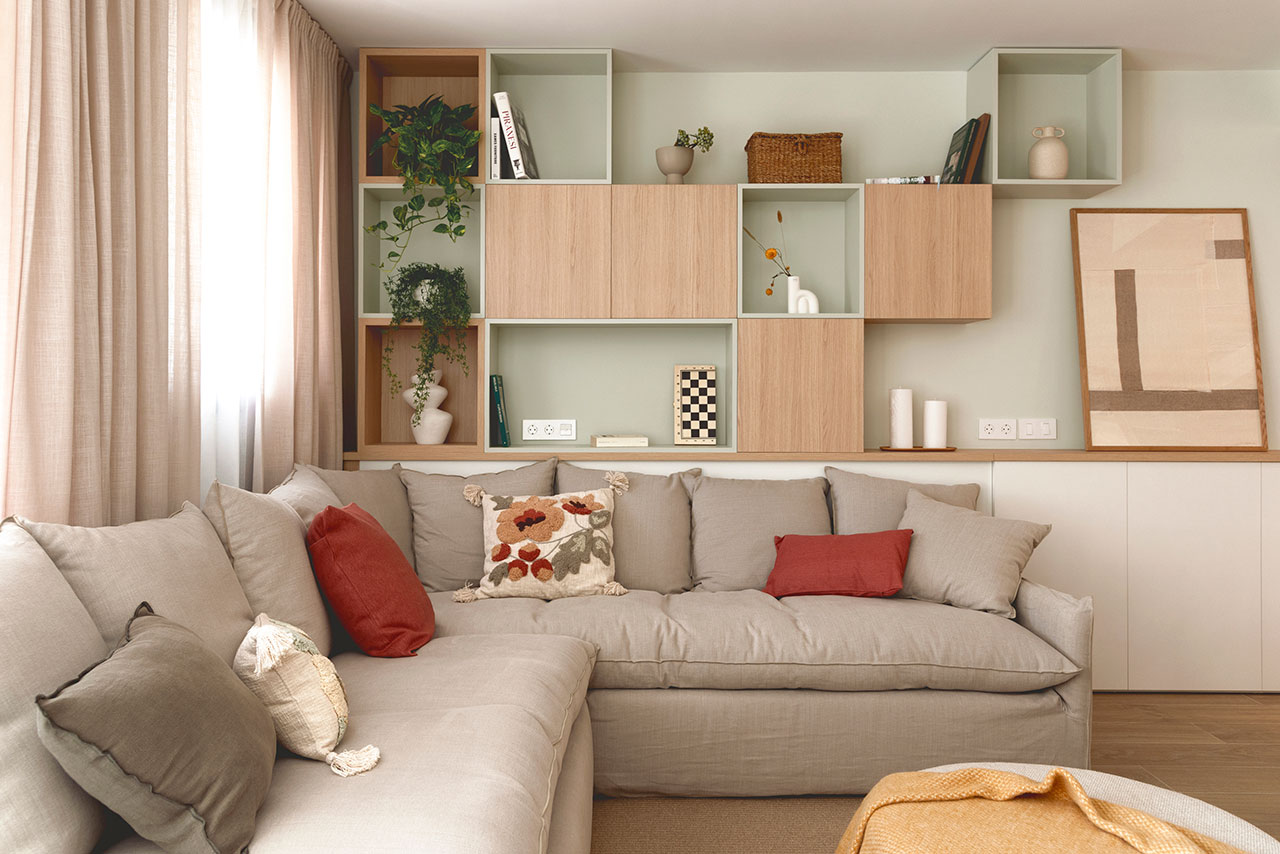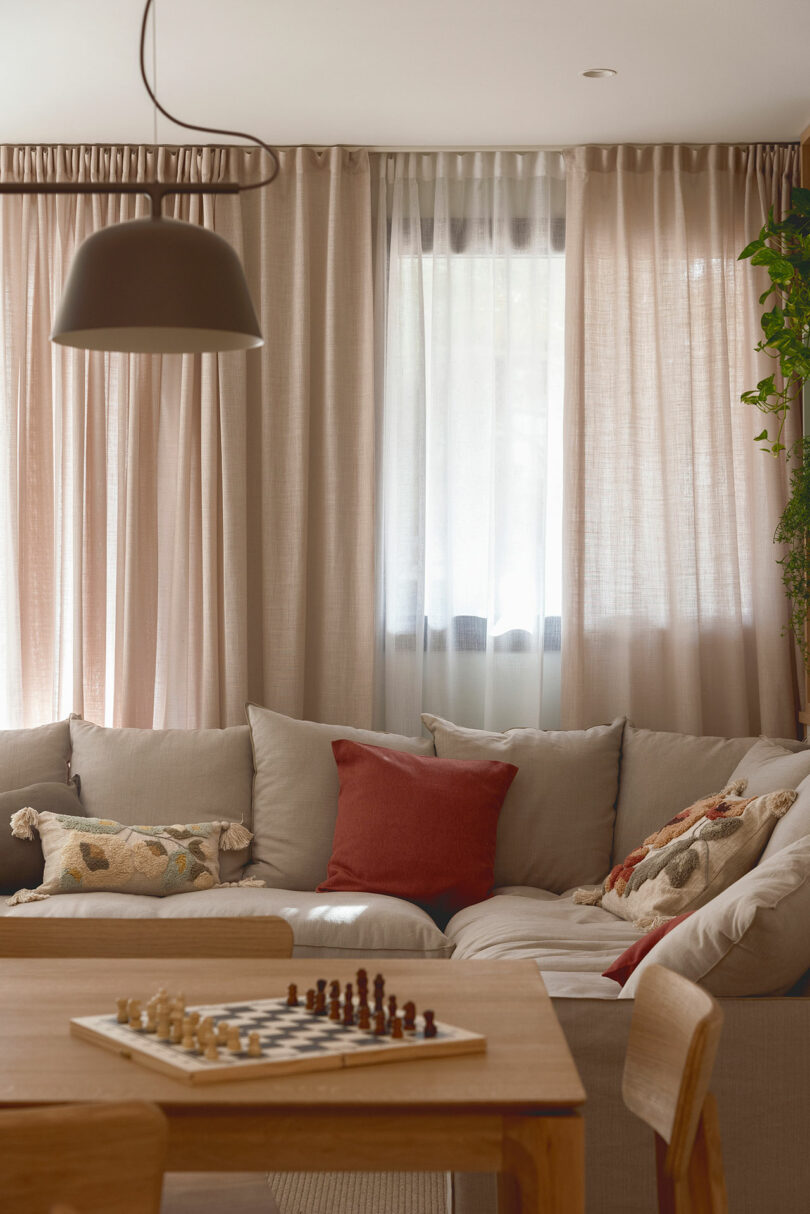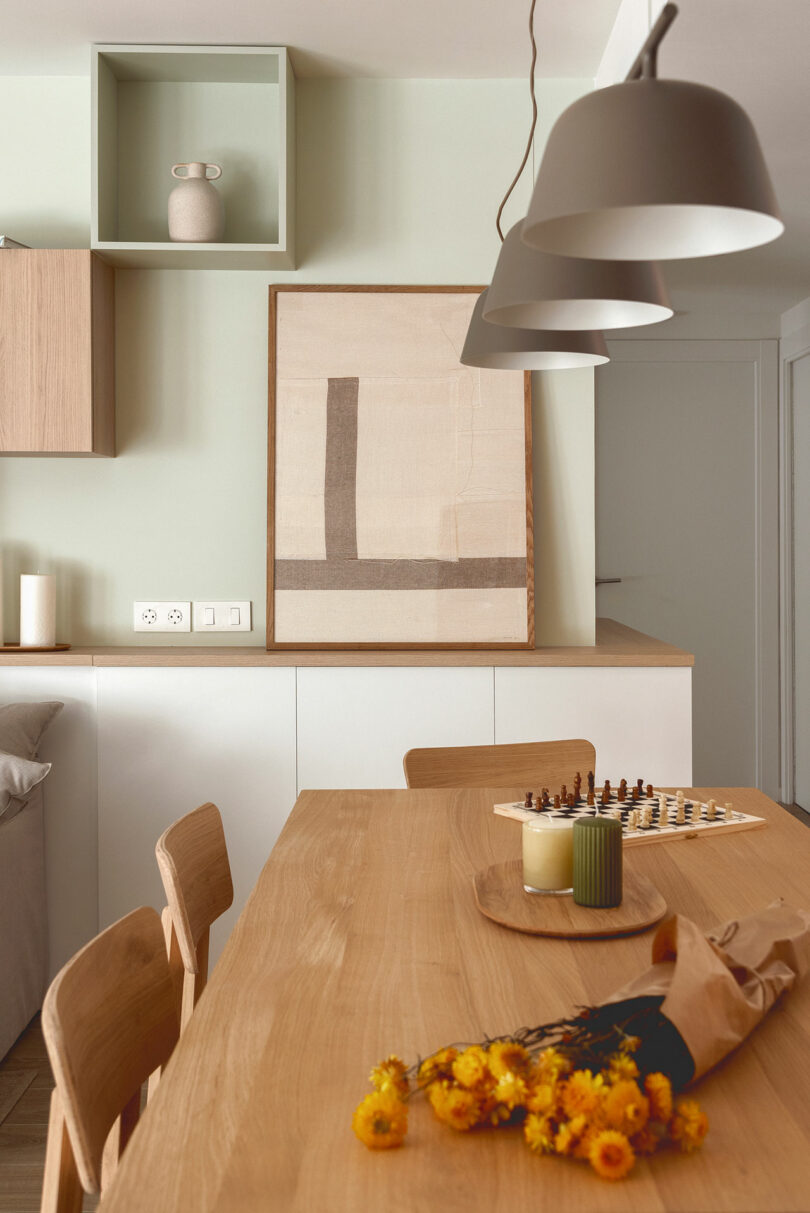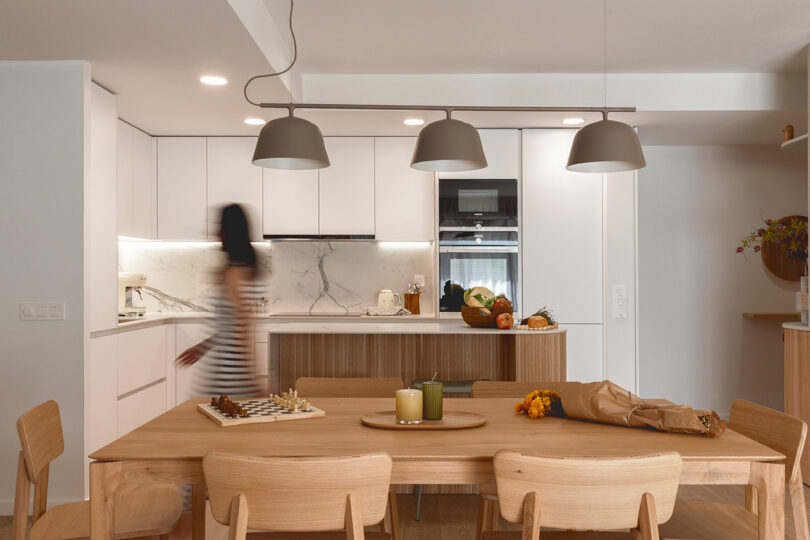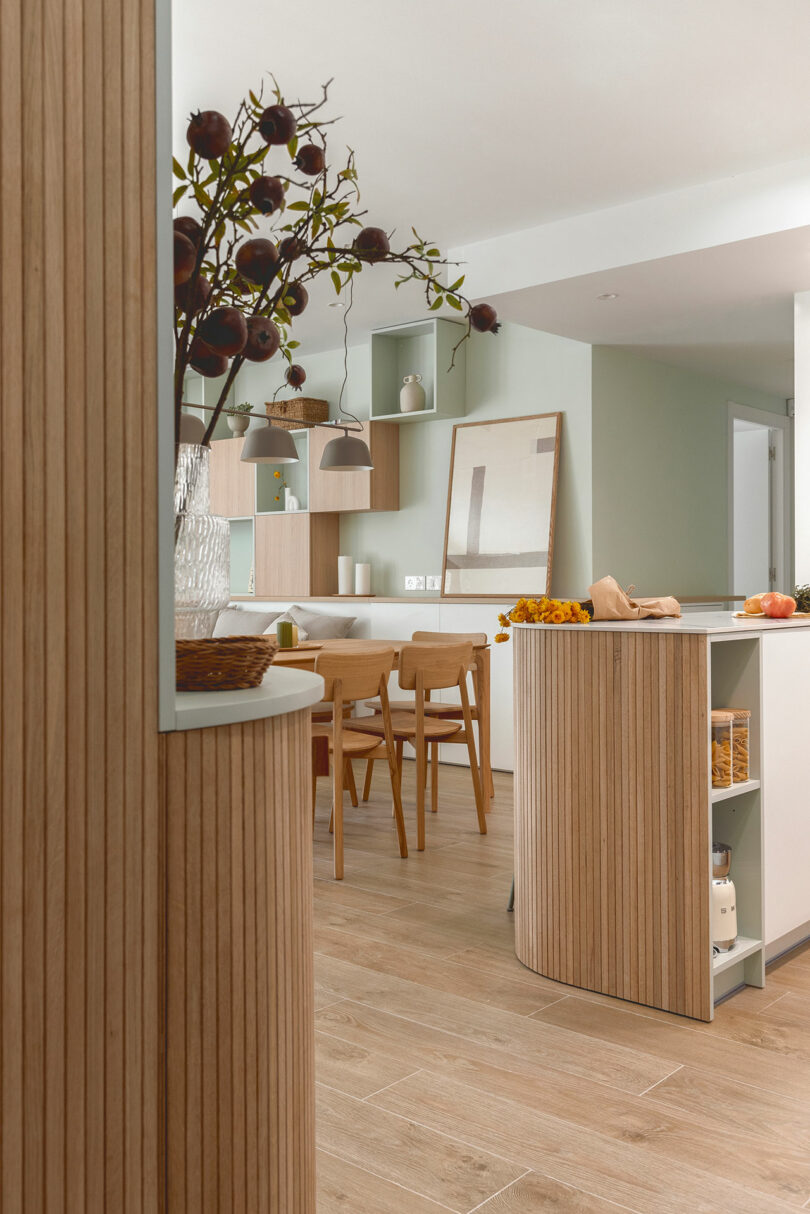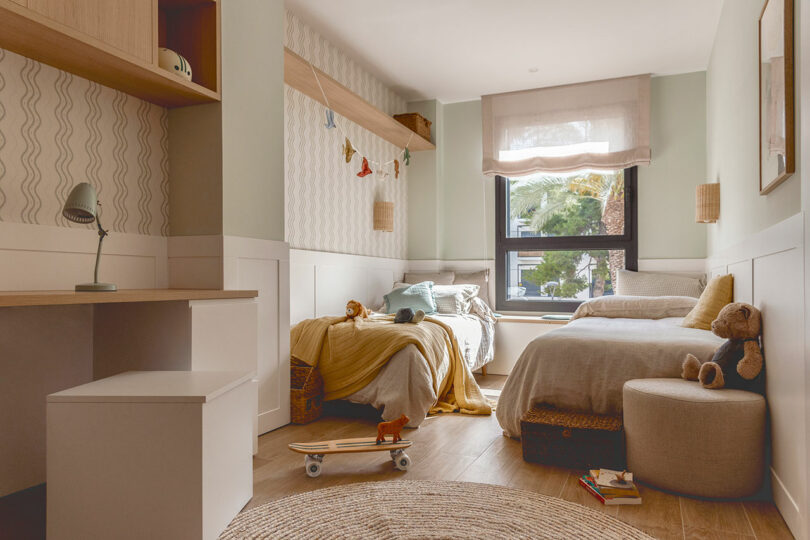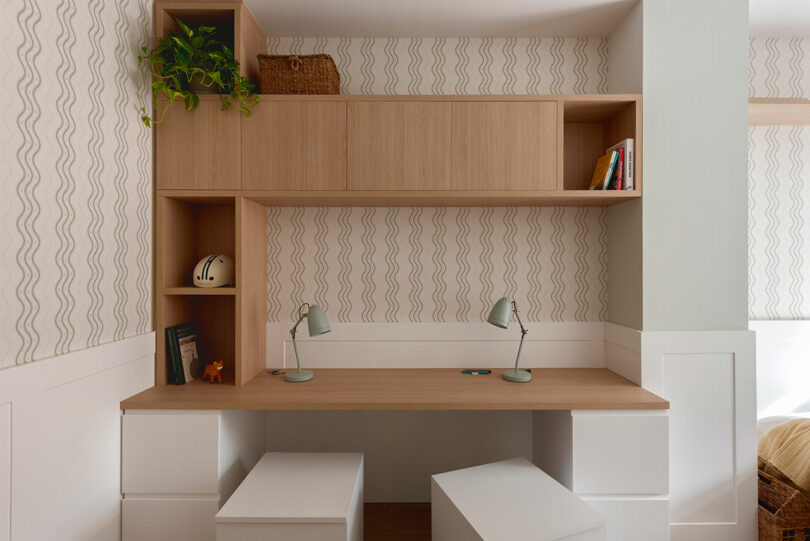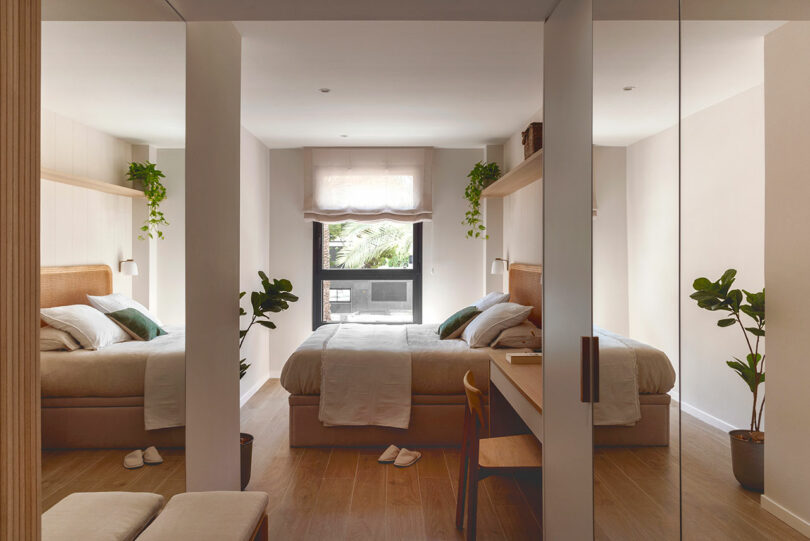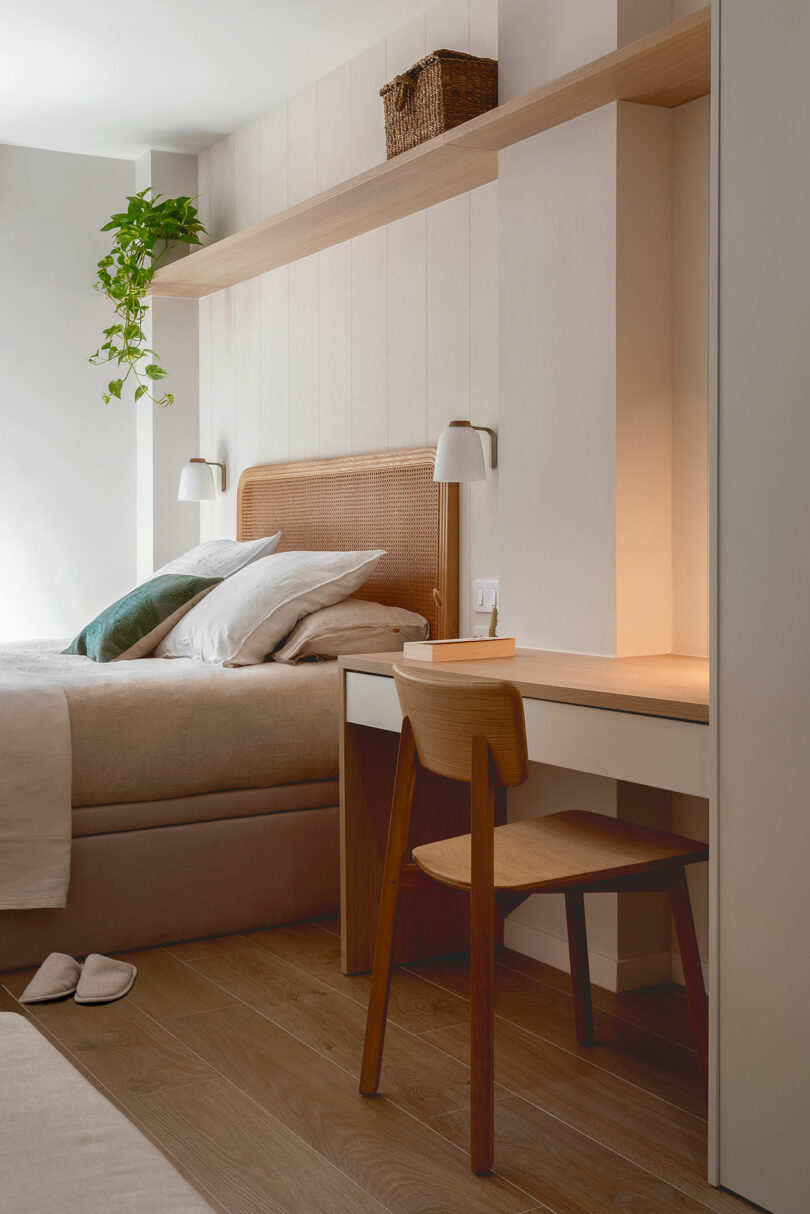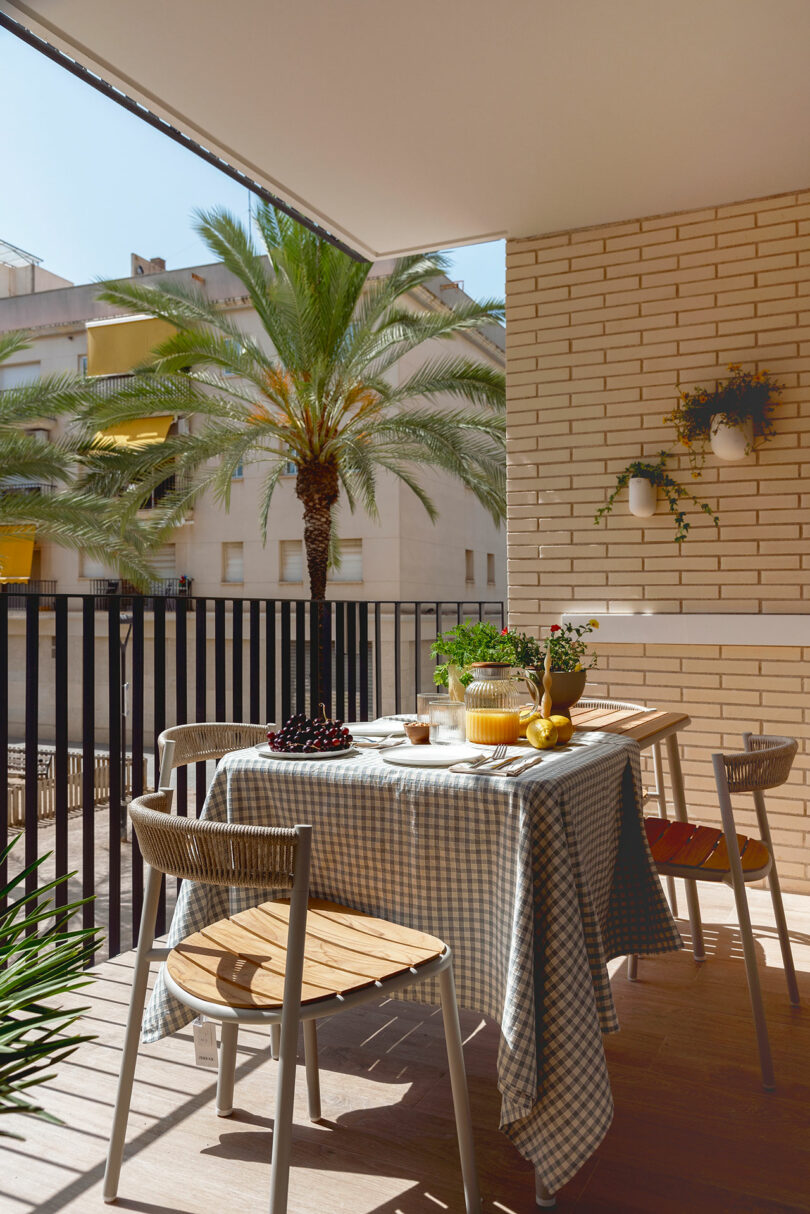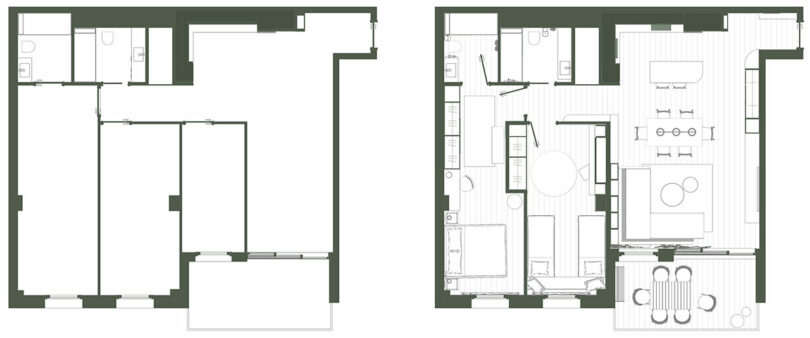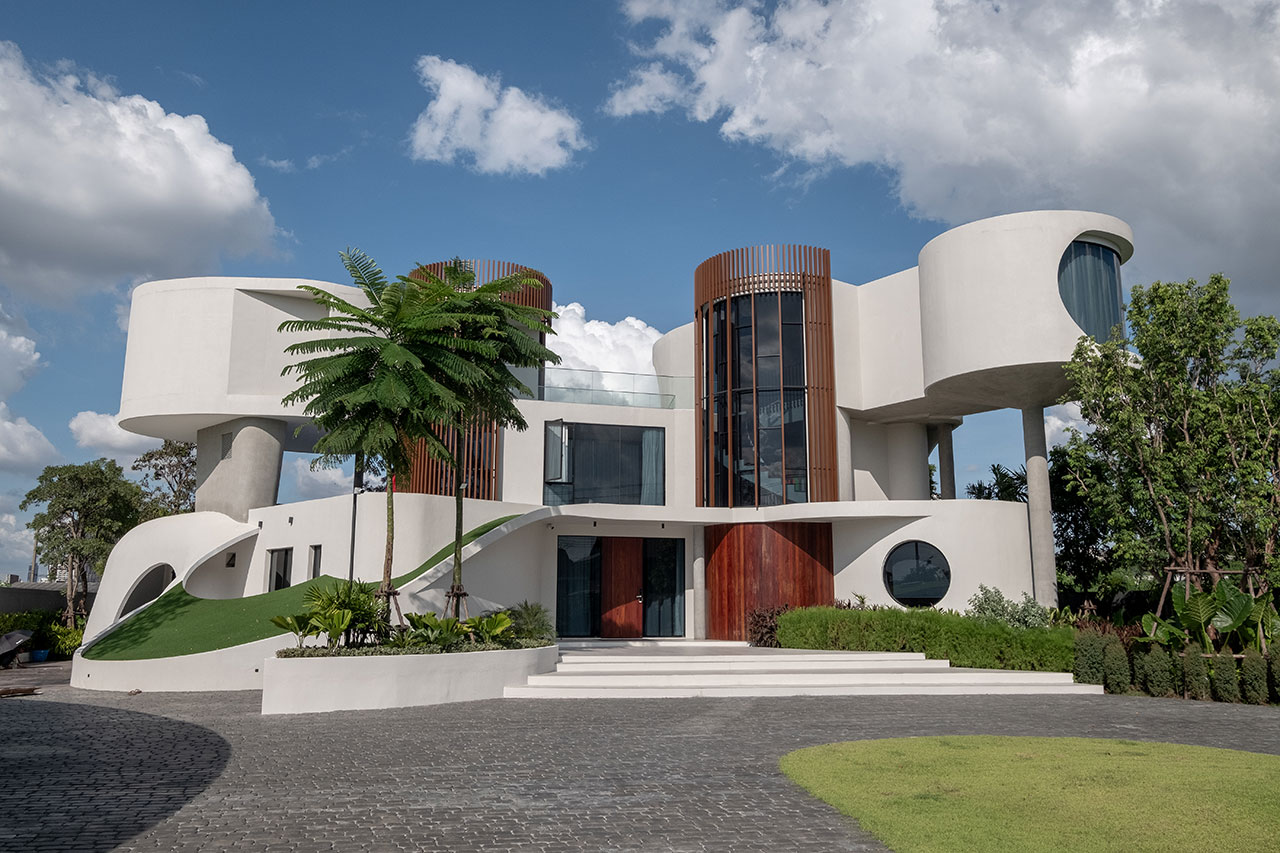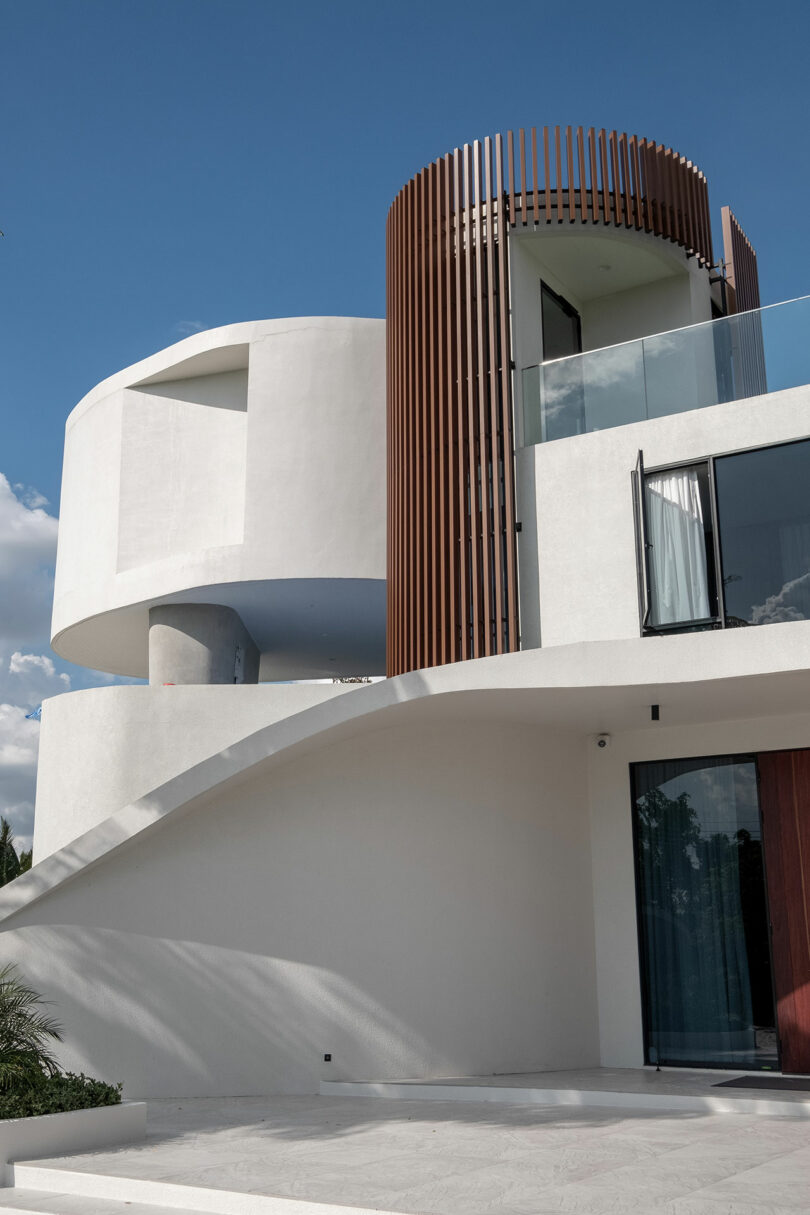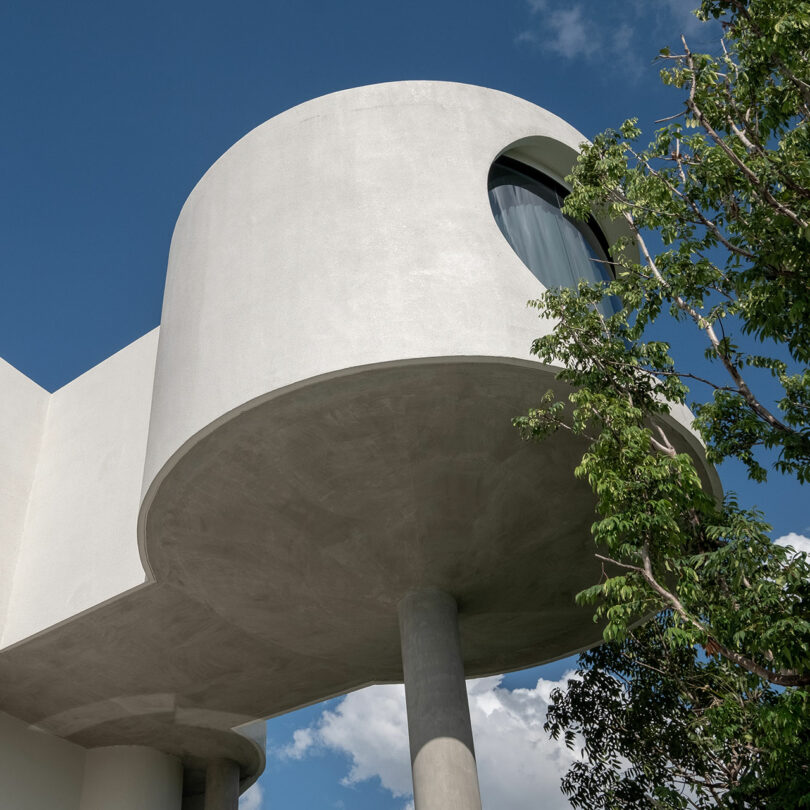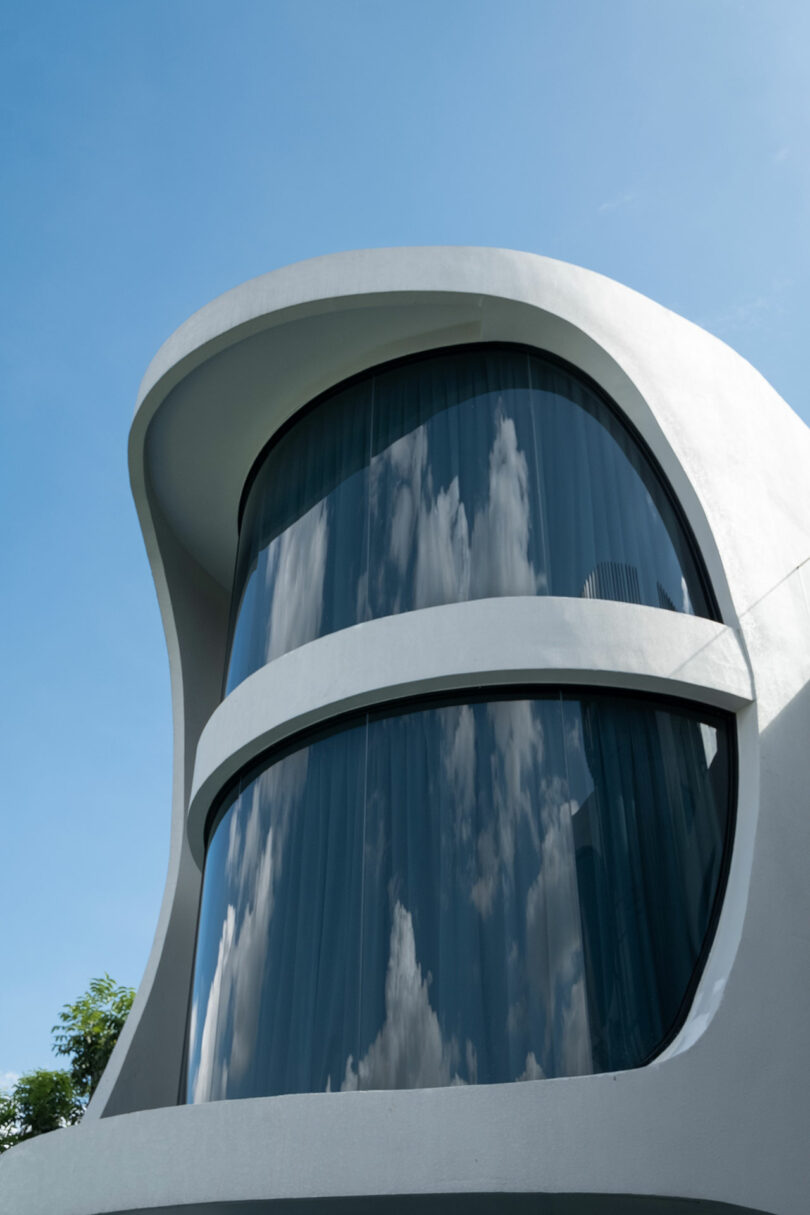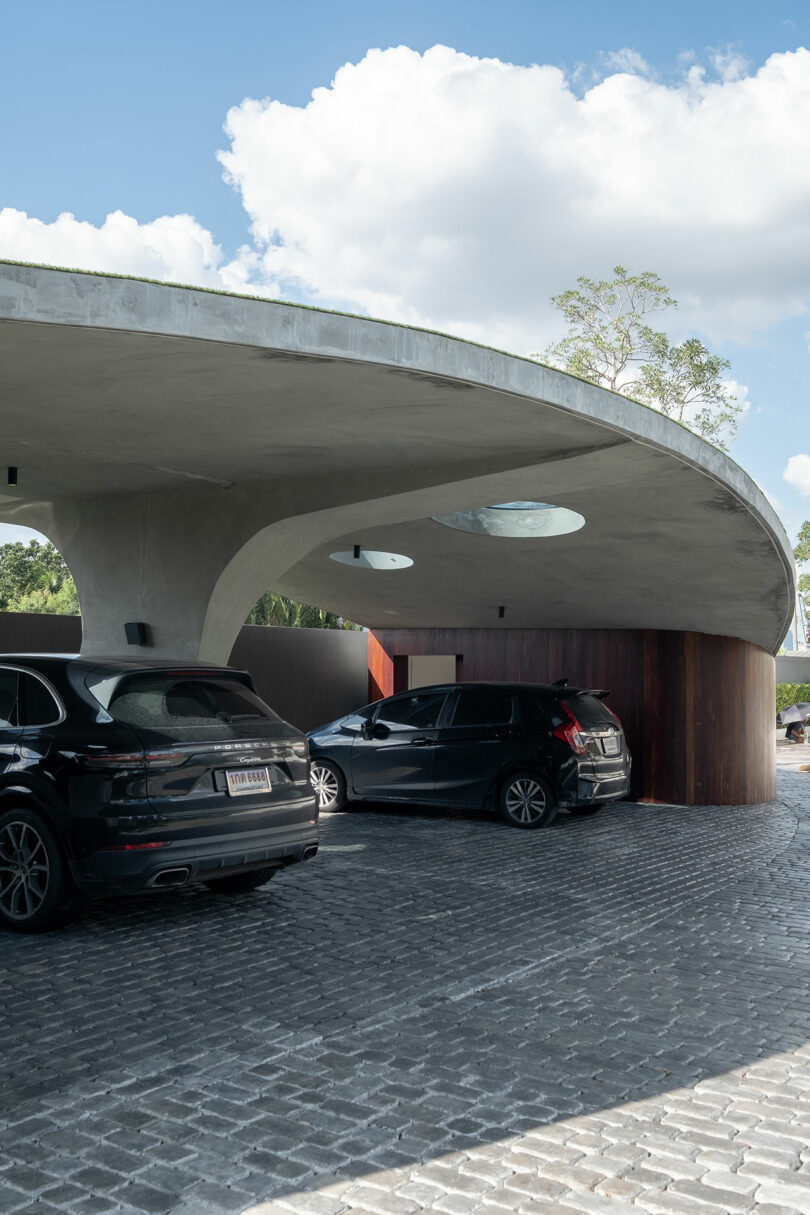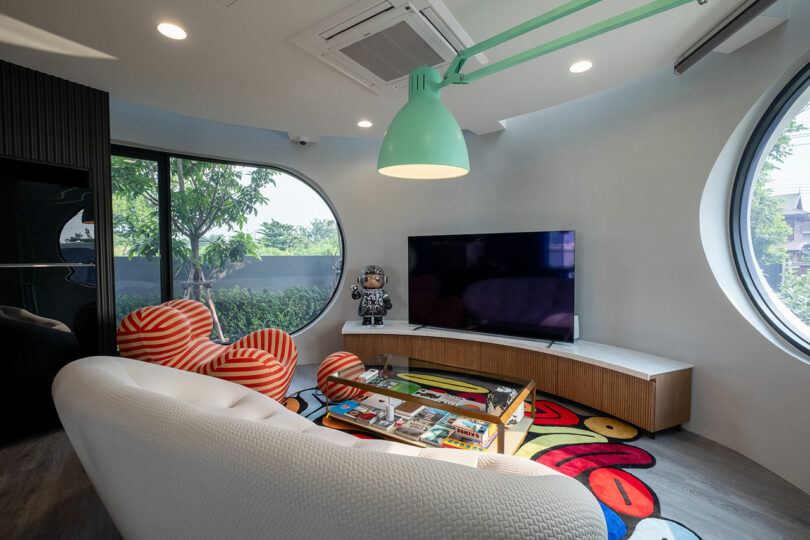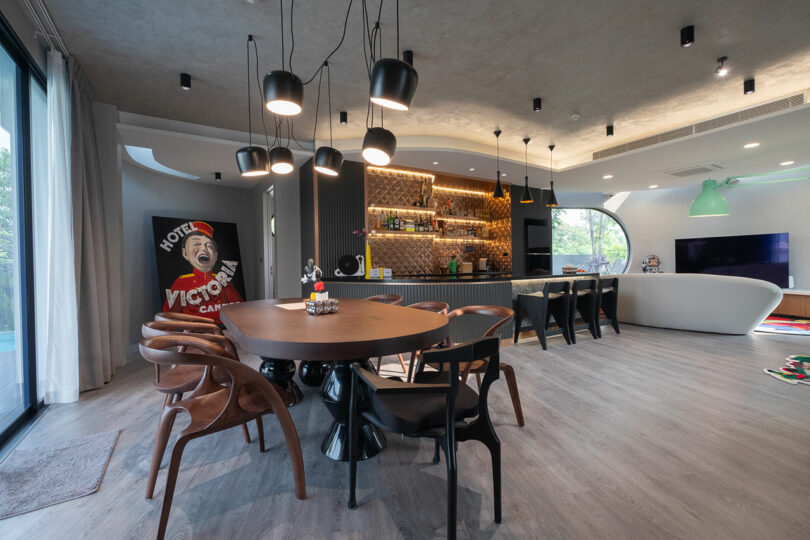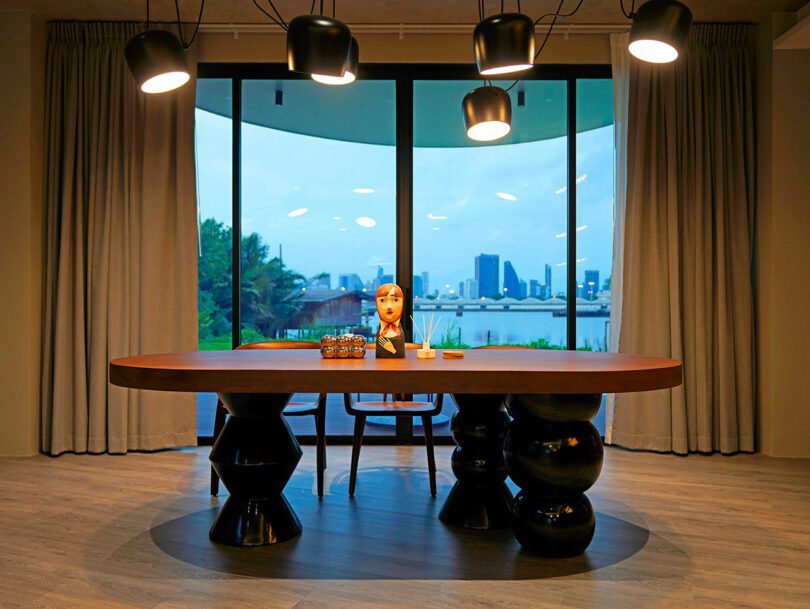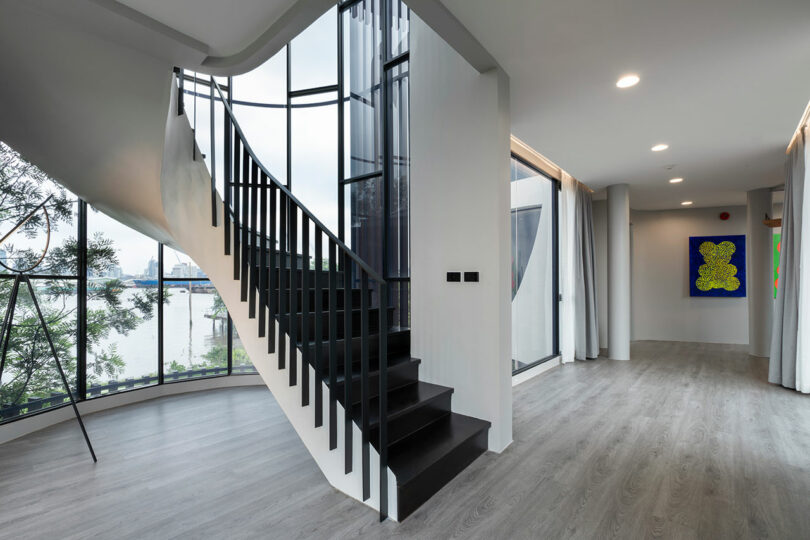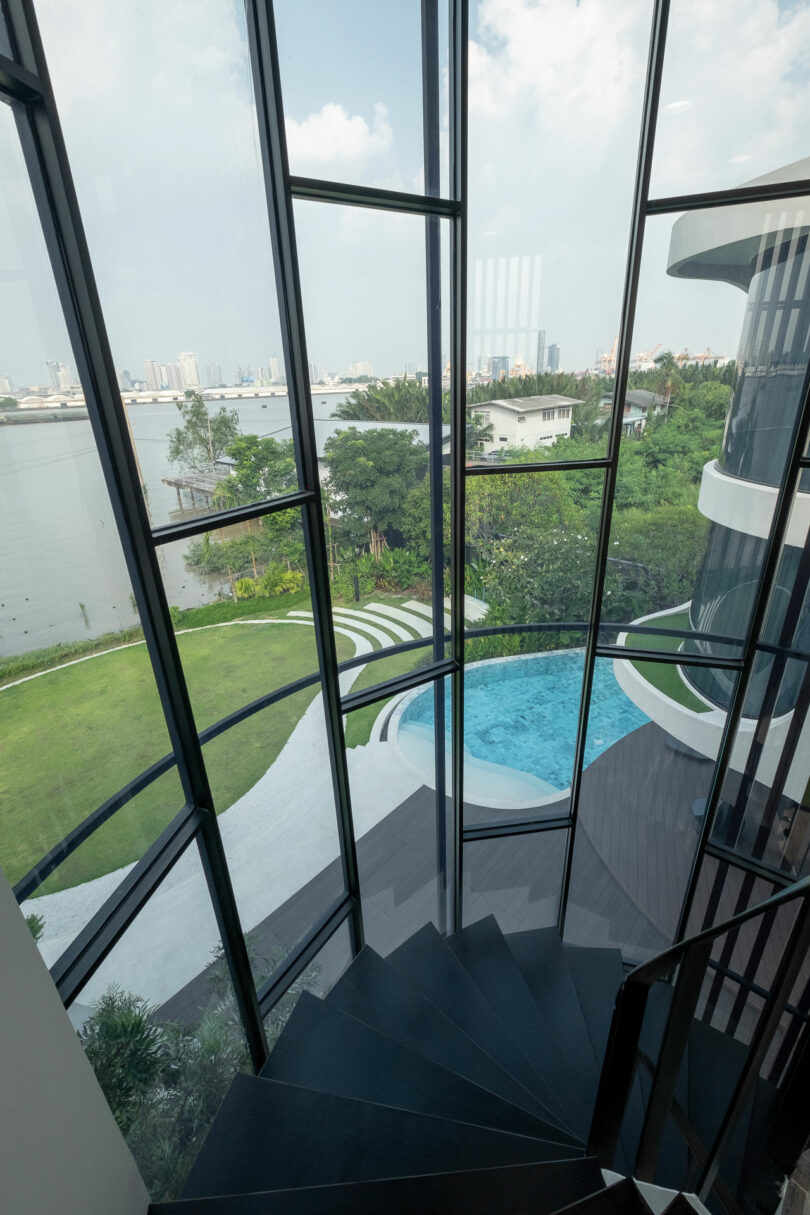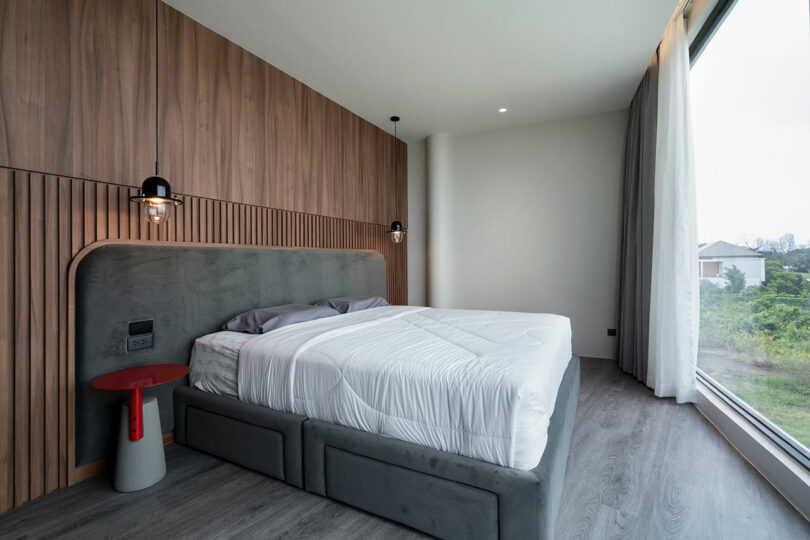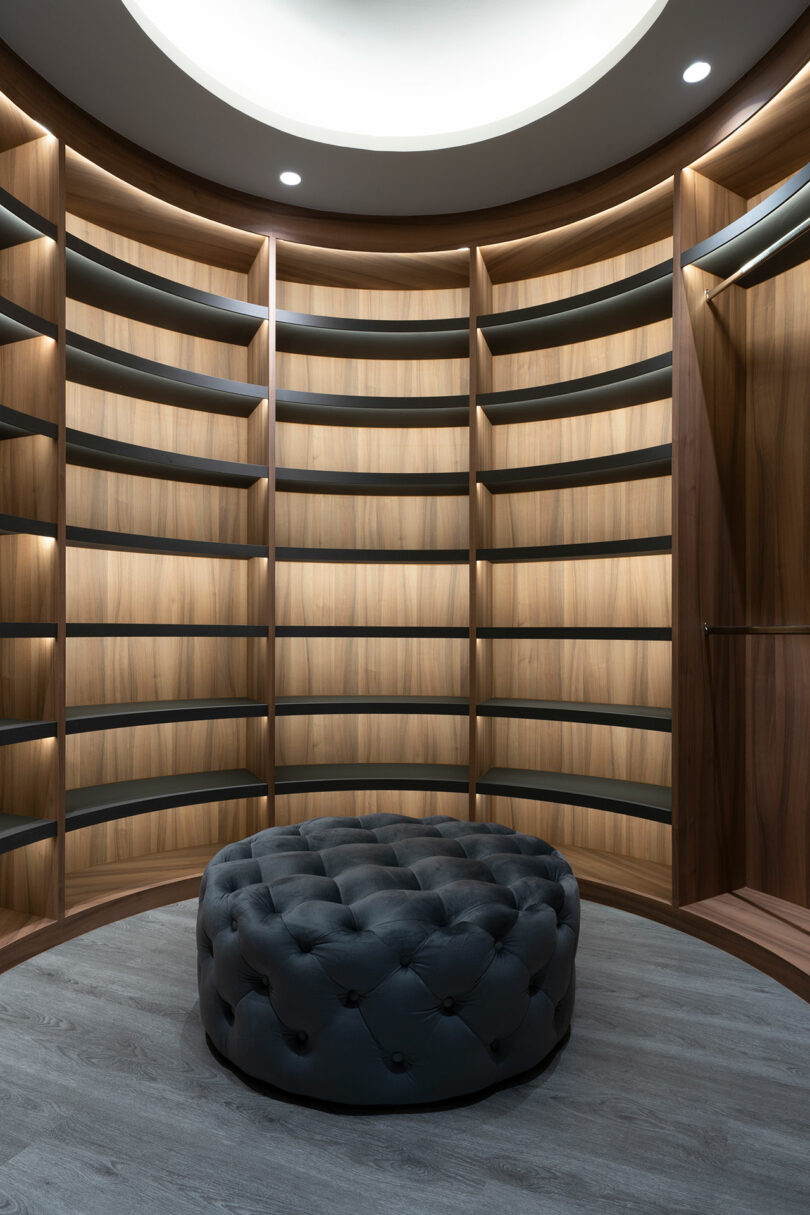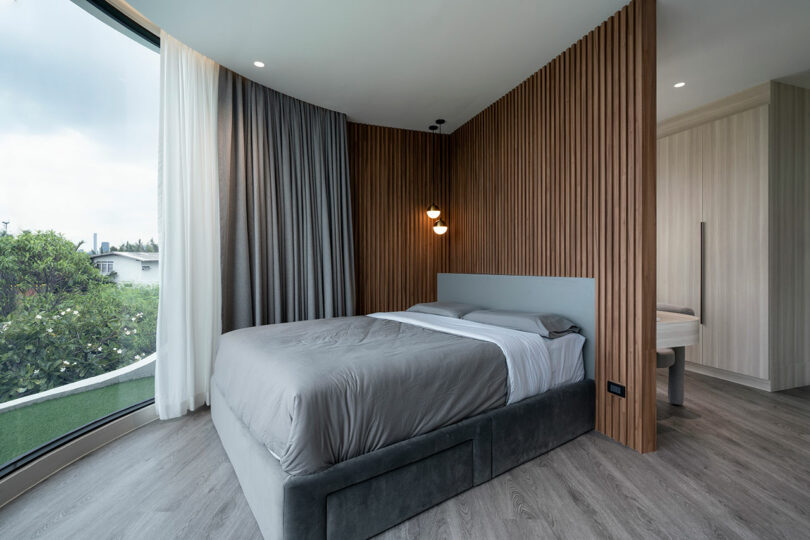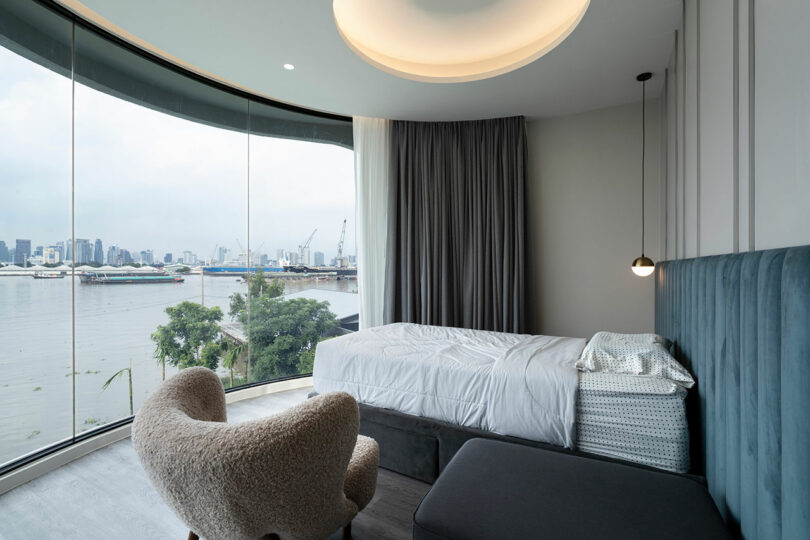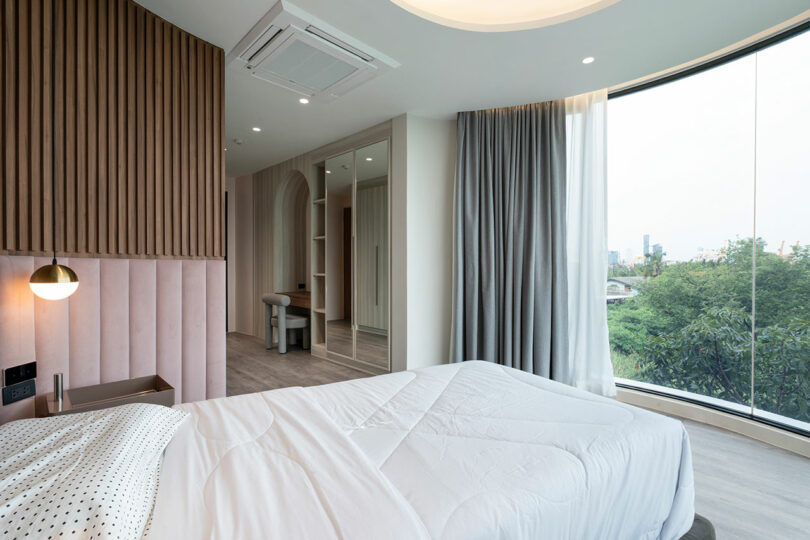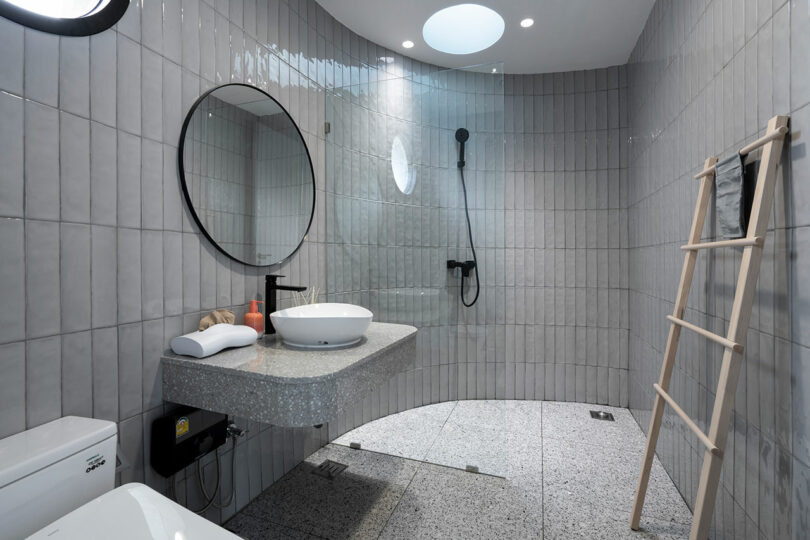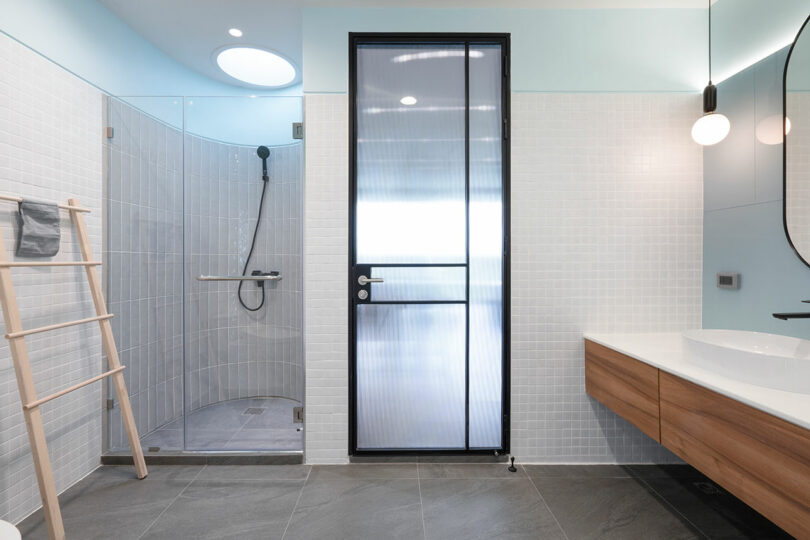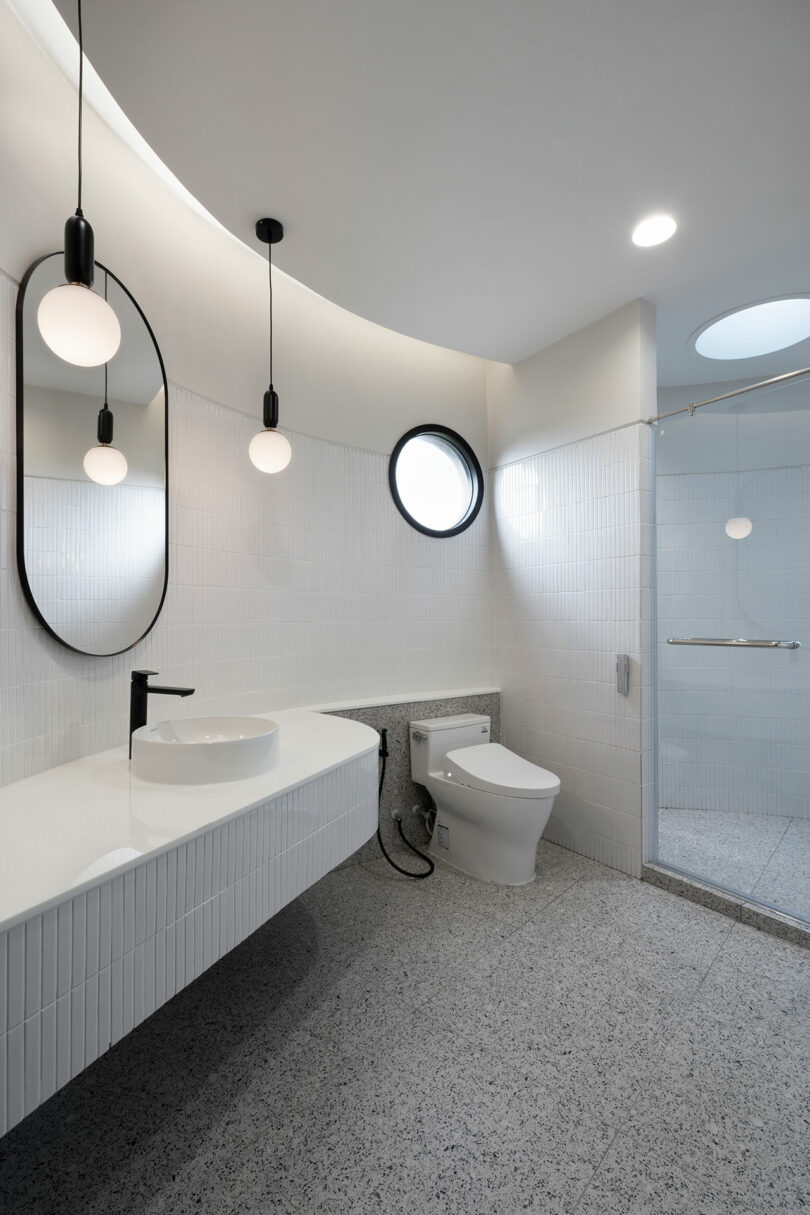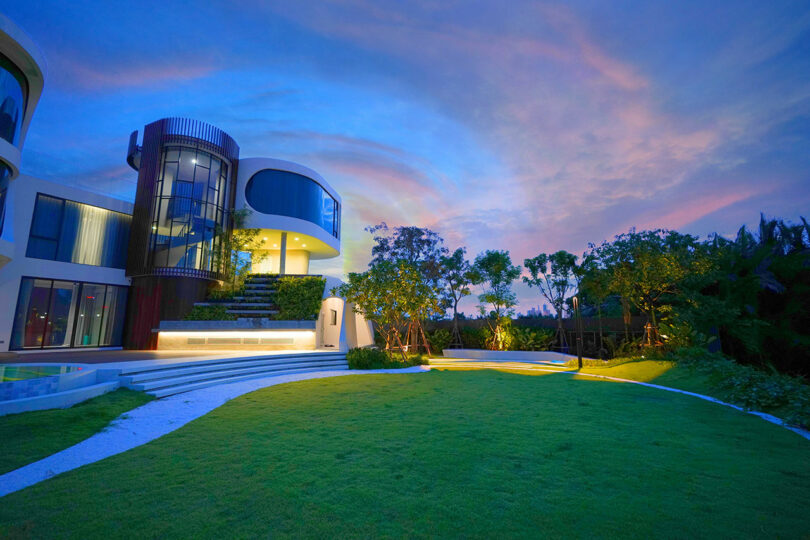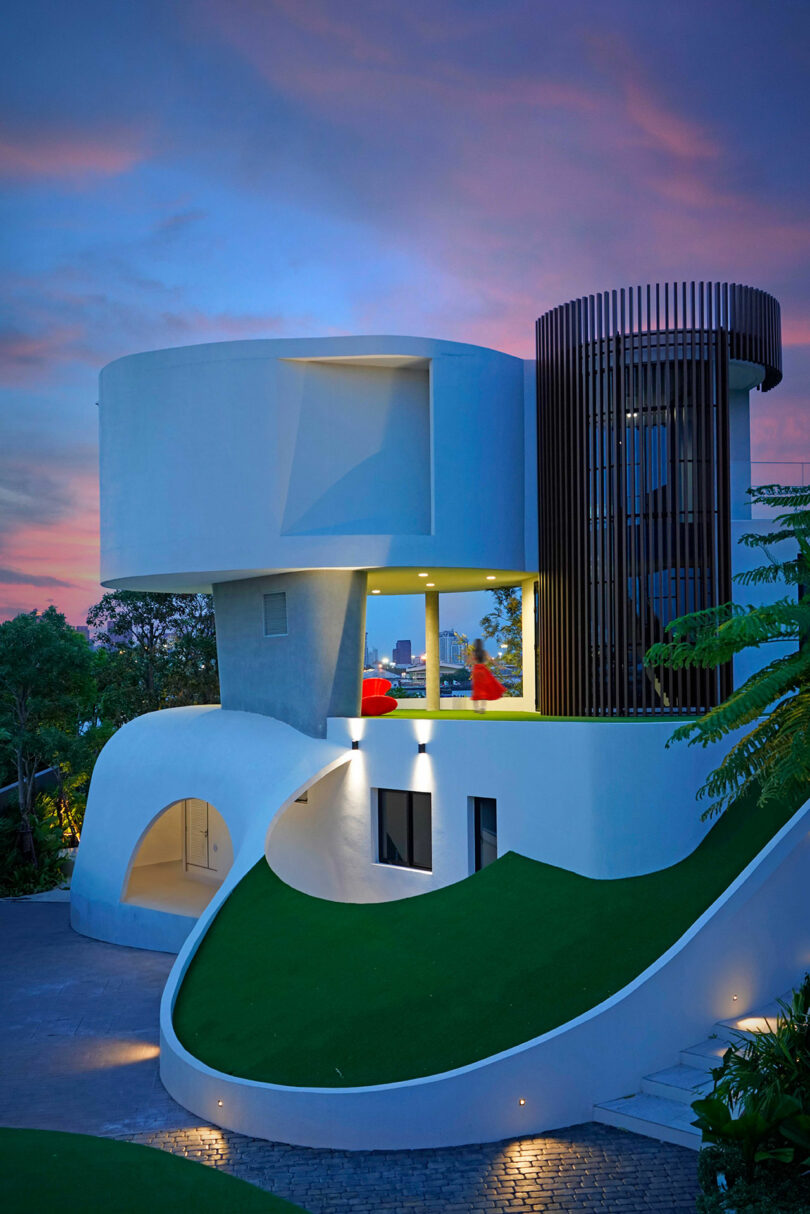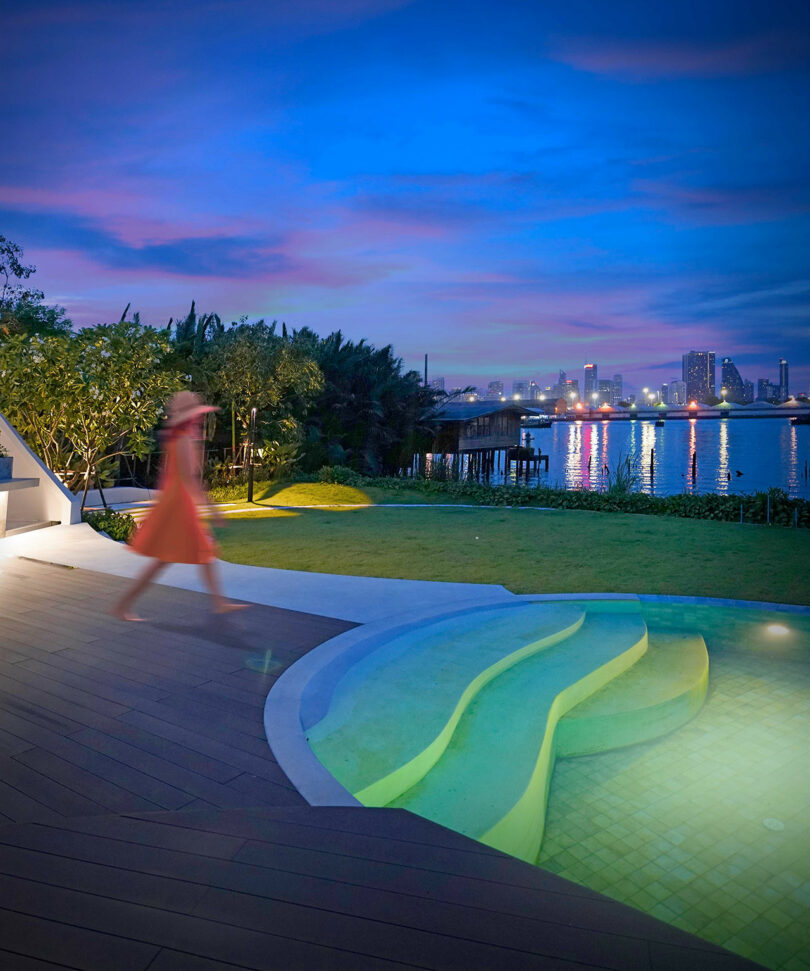Category: Architecture
A Playful, Modern Blend of Geometry and Generations
[ad_1]
Cover Architecture, a Los Angeles-based firm, has introduced a fresh take on accessory dwelling units (ADUs) with their recent project, the Moongate ADU. Situated in a quiet neighborhood of Altadena, the 620-square-foot residence features an eye-catching sculptural facade and a creative blend of geometric forms, making it stand out as a modern addition to a 1960s ranch-style property.
The ADU was designed by Mike Wang, principal architect at Cover Architecture, for his mother, Pei, and her partner, Dan – both former professors. The dwelling is intended to offer them a comfortable space to enjoy their retirement while staying close to Wang’s family in the main house. Unlike traditional layouts where an ADU might be tucked away behind the main house, the Moongate ADU is prominently positioned at the front of the lot. This unconventional placement creates a striking contrast with the original single-story home, which is located at the back of the property, near a ravine that overlooks Hahamongna Watershed Park.
The architectural choices for the ADU emphasize a dynamic interplay between old and new, ordinary and extraordinary. The design incorporates a sloped partition wall with a large circular opening that creates both a sense of mystery and a sense of openness. This wall, along with a raised foundation that requires stairs and a deck, forms an inviting outdoor space perfect for relaxation and reading. The ADU’s roof features eaves that curve in harmony with the circular motif, allowing natural light to flow into the living spaces.
The integration of different forms and voids across the facade is primarily influenced by functional needs. The pathway leading from the ADU to an adjacent storage structure forms a central courtyard, creating a shared outdoor space that connects all three structures on the property – the ADU, the storage unit, and the main house. This layout is thoughtfully designed to foster intergenerational living, allowing both privacy and communal spaces for different family members to enjoy.
Inside, the Moongate ADU continues the theme of playful geometry and simplicity. The interior design features a mix of light and natural materials, with details such as rounded knobs on Baltic birch plywood cabinetry lending a soft, tactile feel. The kitchen counter is made of Pietra Artica Marble, while the bathroom vanity is topped with onyx marble, adding a refined touch to the overall aesthetic. The layout remains relatively straightforward, with a well-defined living area, kitchen, bathroom, sleeping space, and a small office nook for continued work – making it a comfortable and functional living environment.
For more information on Cover Architecture, head to coverarch.com.
Photography by Leonid Furmansky.
[ad_2]
Source link
São Paulo Home Reimagined With a Brutalism + Brazilian Feel
[ad_1]
Located in a 1970s building in São Paulo’s Jardins neighborhood, Brazilian firm RUA 141 Arquitetura transformed the JB Apartment that both honors its initial renovation from 2012 and introduces new elements to create a cohesive, modern aesthetic. The renovation project, led by architect Mona Singal, sought to preserve the original architectural language while introducing fresh, vibrant elements. The social areas of the apartment retained the distinctive burned cement flooring, with additional lighting carefully positioned to accentuate the ribbed concrete slabs. A bright yellow sliding door and a painting by artist Gabriela Costa inject a playful dash of color into the entryway, adding a dynamic contrast to the neutral backdrop.
To soften the space’s brutalist feel, a selection of Brazilian-designed furniture and decor was chosen. Pieces like the Bank Table by Jader Almeida, made from polished Nero Marquina marble, and the Jabuticaba Lamp by Ana Neute add a refined touch to the interior. The custom-built bookshelf, crafted from marine plywood, was extended to embrace the living and dining areas, maintaining a sense of continuity throughout the home. In addition to the yellow door at the entrance, a red door opens to reveal passage to the private areas of the apartment, while blue doors in the dining room front a set of built-in cabinets, all rounding out the trio of primary hues.
Several new design elements were introduced to enhance the apartment’s functionality and aesthetic. For example, a glass door was installed to seamlessly connect the terrace with the social area, providing a fluid transition between indoor and outdoor spaces. Metal benches with thin profiles and integrated planters filled with tropical vegetation contrast against the raw concrete surfaces, bringing a natural vibrancy to the setting.
Throughout the apartment, Brazilian design plays a central role, infusing the space with character, comfort, and a sense of lightness. Mona Singal’s vision for the project reflects a deep appreciation for local craftsmanship and design, resulting in a home that is both stylish and inviting, rooted in its cultural context.
The renovation also paid careful attention to the private areas. The existing wooden flooring in the bedrooms was replaced with new Tauari wood in a herringbone pattern, offering a contemporary reinterpretation of classic design. In the primary suite, materials like caramel leather and freijó wood nightstands provide warmth, while unique lighting fixtures and curated artwork introduce personality and charm.
The apartment’s bathrooms showcase a range of artisanal materials. In the powder room, all surfaces are enveloped in ceramic tiles that offer a warm, textured feel, while in the primary bathroom, granilite surfaces are paired with black fixtures and natural wood details to create a refined, sophisticated look. Meanwhile, the children’s bathroom features mint green and white hydraulic tiles that lend a playful, yet modern touch..
For more information on RUA 141 Arquitetura’s projects, head to rua141.com.
Photography by Cacá Bratke.
[ad_2]
Source link
Historic Architecture Tour – The Boca Raton Observer
[ad_1]
Historic Architecture Tour The Boca Raton Observer
[ad_2]
Source link
Ester Bruzkus on David Hockney, Yayoi Kusama + More
[ad_1]
Ester Bruzkus has been interested in design for as long as she can remember. When the young aesthete was 12 years old she began collecting Vogue magazine because she wanted to know what was happening in the world of fashion.
She eventually explored other creative realms, and her ninth grade art teacher’s guidance was instrumental. Trips to museums and galleries supplemented her coursework, and the instructor encouraged Bruzkus to participate in programs for talented students. When Bruzkus was 16 she had already decided to become an architect, because she wanted to make more than just objects or paintings – she was determined to create a more beautiful world.
Based in Berlin, Bruzkus founded her eponymous firm, Ester Bruzkus Architekten, in 2002, and partner (in business and life) Peter Greenberg joined her in 2016. The duo focuses on work at different scales, from residences to hotels, often decorated with furniture designed by the team. There were so many requests for those pieces that Bruzkus opened STUDIO COUCOU, an online shop with a curated selection of bespoke furnishings and favorite finds.
Ester Bruzkus Photo: Debora Mittelstaedt
All of these endeavors are part of a holistic approach that she discovered before she headed to university. As a German cultural representative at Disney World in Florida, Bruzkus learned about backstage operations, and more importantly, how to enhance the guest experience. It was a role that informs her work today as a designer tasked with shaping spaces. “It turns out that what I know about hospitality projects influences how we plan other projects,” says Bruzkus. “Now we make homes and offices which have some of the special feeling of the greatest hotels you’ve ever been to.”
Bruzkus and Greenberg collect images that resonate, especially when they travel. Greenberg even keeps an open source library on Instagram featuring the architecture the couple sees and talks about. For Bruzkus, who takes pictures of everything from text passages to street signs, photography is one of the most effective means of communication. “I photograph everything I see, and my photo library is my record,” she adds. “Most of the time it takes me just a few minutes to find the perfect image to describe my ideas.
Today, Ester Bruzkus joins us for Friday Five!
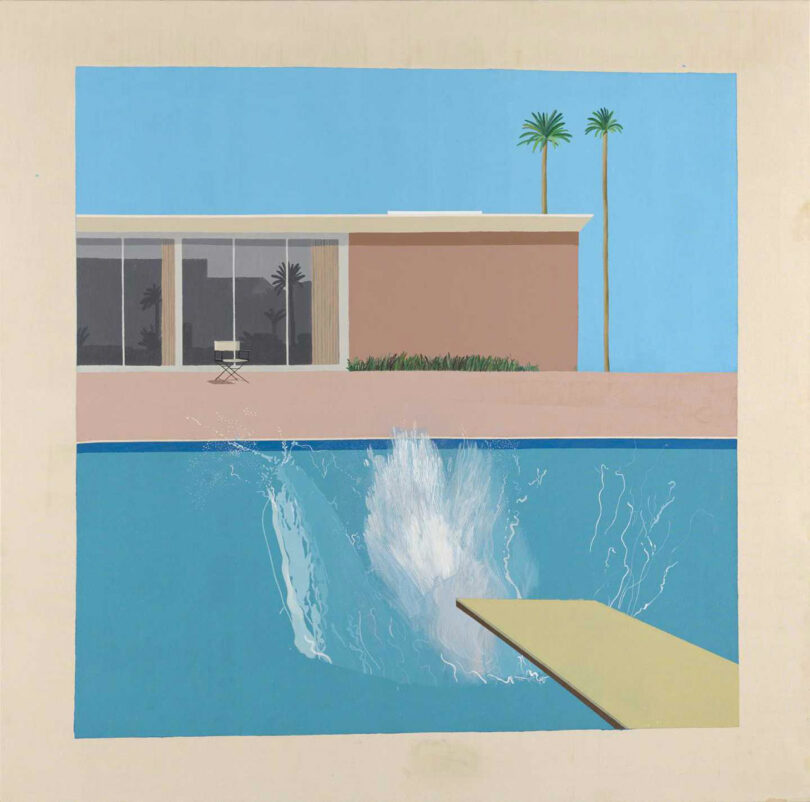
A Bigger Splash (1967) by David Hockney, Tate Photo: Courtesy of Tate © David Hockney
1. A David Hockney Pool
Jumping into the cool, still water is the best way for me to clear my mind, like in David Hockney’s “A Bigger Splash” (1967). The picture also inspired me for the work I did on the restaurant L.A. Poke Berlin that recalled the lightness of California.
I loved how the light was captured in the silver material used for Christo and Jeanne-Claude’s “L’ Arc de Triomphe, Wrapped.” It was an amazing transformation of an iconic monument. I went several times during different weather conditions, and every time I was surprised and touched by the changing appearance of the fabric.
For the 1929 Pavilion, Mies van der Rohe and Lilly Reich created a design that emphasized the nature and effects of the materials they used. By using reflective and transparent materials, they made a space where one can simultaneously see oneself in the reflection, see what is behind, and see what is ahead through the glass.
Peter and I had the opportunity to create an installation there, replacing the original opaque black carpet with a plane of thin reflective plexiglass panels on the floor. We also inserted three additional boxes – two with mirrored surfaces and one, a thin colored outline. We temporarily transformed the Pavilion to reinforce the reading of these doubled surfaces and the perception of expanded spaces, a kind of kaleidoscope or hall of mirrors.
By Le Corbusier, this is one of the most magical and beautiful buildings I have visited. With its open facade there is a wonderful breeze flowing through the space. The contrast of the velvety looking concrete with the lush growing plants is unexpected and very unique. The experience of being inside the building is breathtaking.
This is a picture I took inside the “Infinity Mirror Room-Phalli’s Field” at the Yayoi Kusama exhibition at the Gropius Bau in Berlin. I love the opulence, the repetition, and when colors happen to match perfectly. Like here in the picture, my shoes and my dress create a perfect moment of patterns and colors.
Work by Ester Bruzkus:
REMI Restaurant Berlin Ester Bruzkus Architekten approached the design of the new Berlin-Mitte restaurant REMI for chefs Lode van Zuylen and Stijn Remi by using architectural materials that are high in quality, carefully sourced and crafted, with rigorous attention to detail. This is the very approach to ingredients that the chefs bring to crafting a meal, so the success of the project results from a synergy between the architects and the chefs. The design is intended to emphasize simplicity and quality – and to enhance a dining experience that is authentic, straightforward and fun.

Photo: Jens Bösenberg
Ester’s & Peter’s Apartment Berlin The move from one apartment to another in the same building provided the ideal opportunity for Ester Bruzkus to revisit the identical design problem with fresh ideas (please click on “ester’s apartment” to see what she did there) . The new design – Ester’s Apartment 2.0 – is an expression of both restraint and opulence through its efficient planning, its playful use of color, its exceptional lighting, its custom-designed furniture, and its carefully detailed material volumes. The apartment feels bright and spacious like an airy open loft because its space extends from east facade to the west and sunlight enters from sunrise to sunset. It is intricately planned to offer a rich variety of spaces – and to make the most of hidden storage despite its small actual size – just 80 square meters inside.
PSD Bank Berlin-Brandenburg eG Community Space & Offices, Berlin A Bank as a Community Living Room. Located inside a historic Post Office in Berlin- Friedenau, the design transforms the bank into a generous and welcoming neighborhood center. In addition to traditional banking services like ATMs, consulting rooms, and help desks, there are also unexpected spaces for a bank: a café, a colorful community living room, an interior garden, exhibition spaces, and public meeting rooms. While most banks are closing their brick and mortar locations, the PSD Bank has opened as a neighborhood center to welcome everyone in the community.
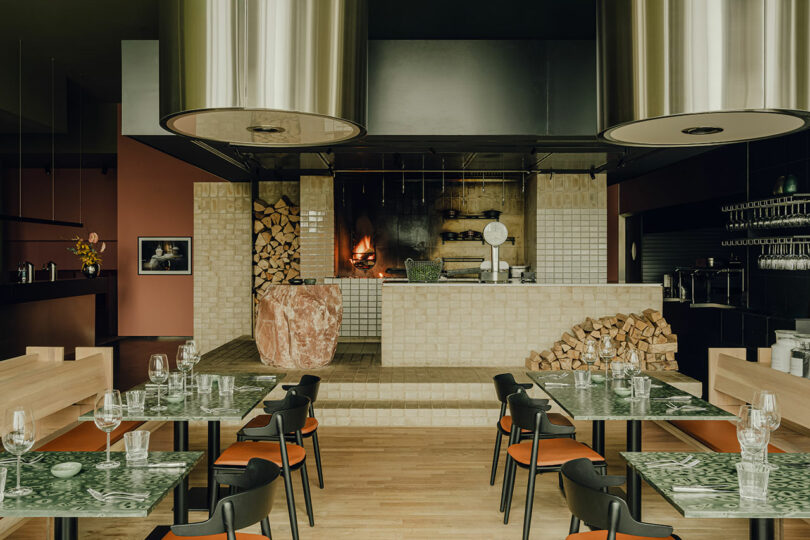
Photo: PION Studio
Beefclub “Fire+Salt” Restaurantin Wolfsburg Beef Club “Fire + Salt” is a radical refresh of an existing eatery in Autostadt, the automotive theme park at the headquarters of Volkswagen Group in Wolfsburg. At the center of the space is the theatrical preparation of food on a grill – and an open brick fireplace is positioned where everyone can see it, recalling an archaic fire at the center of a shared dining experience. Building materials emphasize the fire and salt of the menu – the grill is made from fired bricks; wood dining tables have been treated with salt to introduce unique colors, patterns, and textures.
[ad_2]
Source link
Blending Nordic Minimalism + Mediterranean Warmth in Spain
[ad_1]
A recent residential renovation project in Vilanova i la Geltrú, Catalonia, Spain, has transformed a 915-square-foot space into a serene coastal retreat, showcasing a unique blend of Nordic and Mediterranean influences. The project, led by Eva González Estudio, focuses on creating a harmonious, adaptable living environment with an emphasis on custom furniture design and thoughtful material selection.
The renovation revolves around the strategic use of light, soft hues, and natural wood elements, creating a calming and cohesive aesthetic. The main goal was to maximize functionality while maintaining an uncluttered appearance. This approach by Eva González Estudio is evident in the custom-built furniture by Disseny9evo, which combines open and closed modules to provide versatile storage solutions. These custom pieces help in optimizing the space, ensuring every corner is both useful and stylish.
The common areas, including the living and dining spaces, serve as the central hub of the home. The living room is designed to be bright and open, featuring a spacious sofa from Atemporal that anchors the room and invites relaxation and family time. Integrated shelving and storage further enhance the room’s functionality while maintaining a clean, modern look.
The dining room, furnished with simple, elegant pieces from the Ethnicraft brand, adheres to the minimalist theme. The decor is complemented by the adjustable Ambit Rail lamp from Muuto, which adds a warm, earthy ambiance perfect for mealtime or having friends over.
The children’s room is crafted with creativity in mind, offering a playful yet organized space for its young occupants. Combining classic wainscoting with retro-inspired wallpaper from the Swedish brand Sandberg, the room balances fun with sophistication, ensuring the design remains appealing as the children grow.
The primary bedroom focuses on simplicity and natural textures to create an environment of calm and relaxation. Minimalist furniture and decor, coupled with elements like hanging plants and floral arrangements, introduce a sense of nature and tranquility. An adjacent dressing area, equipped with mirrors strategically placed to amplify light, adds to the room’s sense of spaciousness. A built-in desk, tailored to match the room’s aesthetic, provides a practical space for remote work.
The renovation emphasizes sustainability, with a focus on durable, easy-to-maintain materials that reduce the need for future updates. The careful curation of furnishings and finishes not only enhances the home’s energy efficiency but also ensures it remains adaptable for years to come. By seamlessly integrating functionality with aesthetic appeal, the renovation in Vilanova i la Geltrú offers a modern, flexible living space tailored to meet the needs of contemporary coastal living.
For more information or to see more projects by Eva González Estudio, head to evagonzalezestudio.com.
Photography by Juan Serlo.
[ad_2]
Source link
A Curvy Futuristic Home on an Island in Bangkok
[ad_1]
Situated in Bangkok, Thailand within the serene enclave of Bang Kachao, The Nest is a riverside residential project that redefines the relationship between architecture and its natural surroundings. Designed by The Collective Studio Co., Ltd., this 4,305-square-foot residence embodies a respect for its environment while offering a playful, curvy living space.
The Nest draws inspiration from the idea of a “nest,” symbolizing a home that is both a refuge and a part of the natural world. This concept is brought to life through a design that seamlessly integrates with the lush landscape of Bang Kachao, often referred to as the “green lung” of Bangkok. Positioned near the Chao Phraya River, the futuristic residence takes full advantage of its verdant surroundings, creating a peaceful retreat that feels both intimate and expansive.
Legal constraints, including a height limit and setback requirements, guided the architectural approach. The building is centrally positioned on its riverside plot, with its form emerging organically from the ground, echoing the natural growth of a tree. This central placement not only respects the site’s natural contours but also allows for a gradual rise from the entrance to the main living areas, enhancing the feeling of being welcomed by the landscape.
The residence is separated into two wings connected by a spacious ground floor hall. The east wing hosts an open plan living space that flows from the indoors to the outdoors, with a dining area that extends onto a balcony overlooking the river. In contrast, the west wing is dedicated to service areas, including the kitchen and bathrooms, ensuring that functional needs are met without compromising the aesthetic integrity of the home.
The garage, with its elevated concrete structure and modern-retro roof design, adds to the project’s architectural narrative. Circular skylights create playful patterns of light and shadow, while the roof, covered in artificial grass, extends the green expanse of the lawn.
The Nest’s design emphasizes both relaxation and entertainment. A wooden deck terrace serves as a hub for social gatherings, complete with a vertical garden that provides natural cooling. The design of the swimming pool, which mirrors the curves of the building, offers privacy while maintaining views of the river, creating a serene oasis for residents.
A striking double-sided spiral staircase, outfitted with aluminum wood-patterned slats, serves as a central element, connecting the various floors while controlling sunlight and maintaining a flow of natural light throughout the interior. This staircase leads to the second floor retreat, where a cylindrical bedroom offers panoramic views, creating a tranquil space that’s visually connected to the outdoors.
The third floor is dedicated to the primary suite that continues the theme of curvilinear forms, with the bedroom offering sweeping views of the river through a curved glass wall. A walk-in closet and a bathroom with a circular skylight add to the sense of privacy and elegance, creating a space that feels luxurious.
Additional bedrooms in the east wing are designed with equal attention to detail, each offering unique perspectives of the surrounding landscape, whether facing the river or the garden. The architectural design makes extensive use of geometric forms, with cylinders and rectangles creating a dynamic interplay of shapes that is both visually striking and functionally efficient.
The landscape design is an integral part of The Nest’s overall concept. Trees and greenery are used not only to frame the building but also to enhance the privacy of its occupants. The riverside area is transformed into a multifunctional space for recreation and relaxation, with polished stone benches that appear to rise naturally from the ground, creating a continuous, flowing connection between the building and its location.
For more information on The Collective Studio Co., Ltd., head to ctstu.com.
Photography by Mr. Kopchai Limpanataywin & Mr. Saharath Sawadatikom.
[ad_2]
Source link

